Art & Exhibitions
See Nearly Every Work on View at the 2024 Whitney Biennial
The 81st edition of the much-anticipated biennial features the work of more than 70 artists.

The 81st edition of the much-anticipated biennial features the work of more than 70 artists.

Artnet News

The press got its first glimpse of the always anticipated Whitney Biennial yesterday. Curated by Chrissie Iles and Meg Olni, this 81st edition of the museum’s signature survey is titled “Even Better Than the Real Thing.”
Curiously, the Whitney’s press release leads off by saying that the title is meant to capture the threat to our sense of reality posed by Artificial Intelligence. Truth be told, this topical theme seems at best a side note in its story. It is mainly represented in two works by the Berlin-based duo Holly Herndon and Matt Dryhurst (their project is also featured on the museum’s website) They seem like conceptual and aesthetic outliers here.
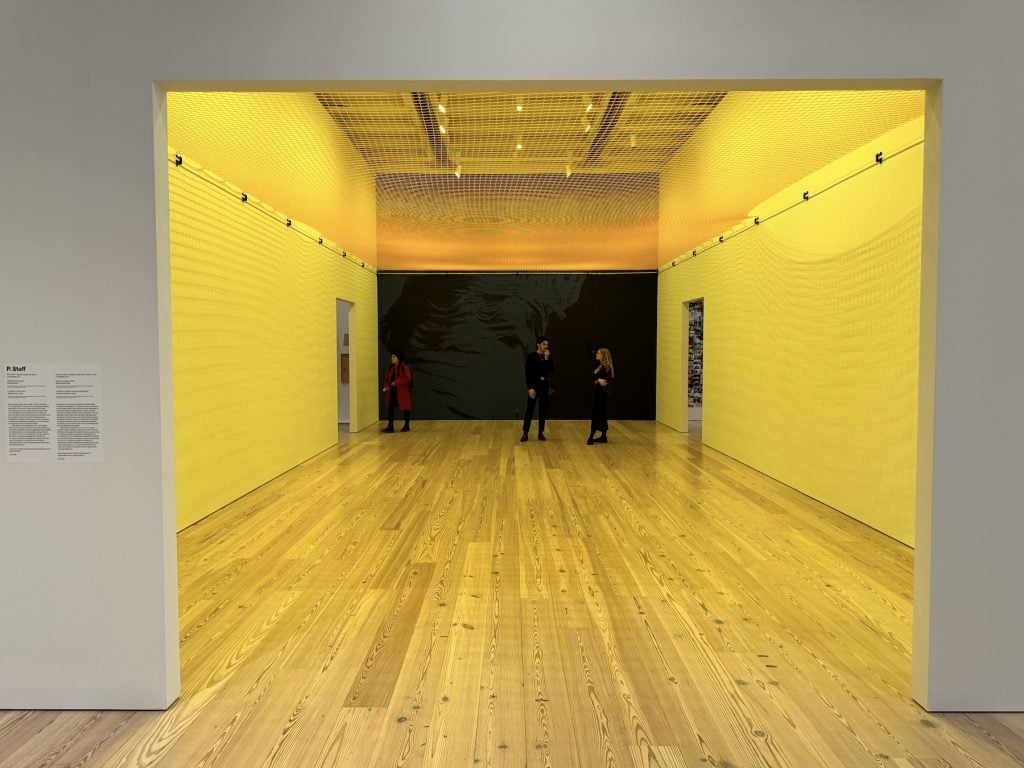
P. Staff, Afferent Nerves (2023) and À Travers Le Mal (2023). Photo by Ben Davis.
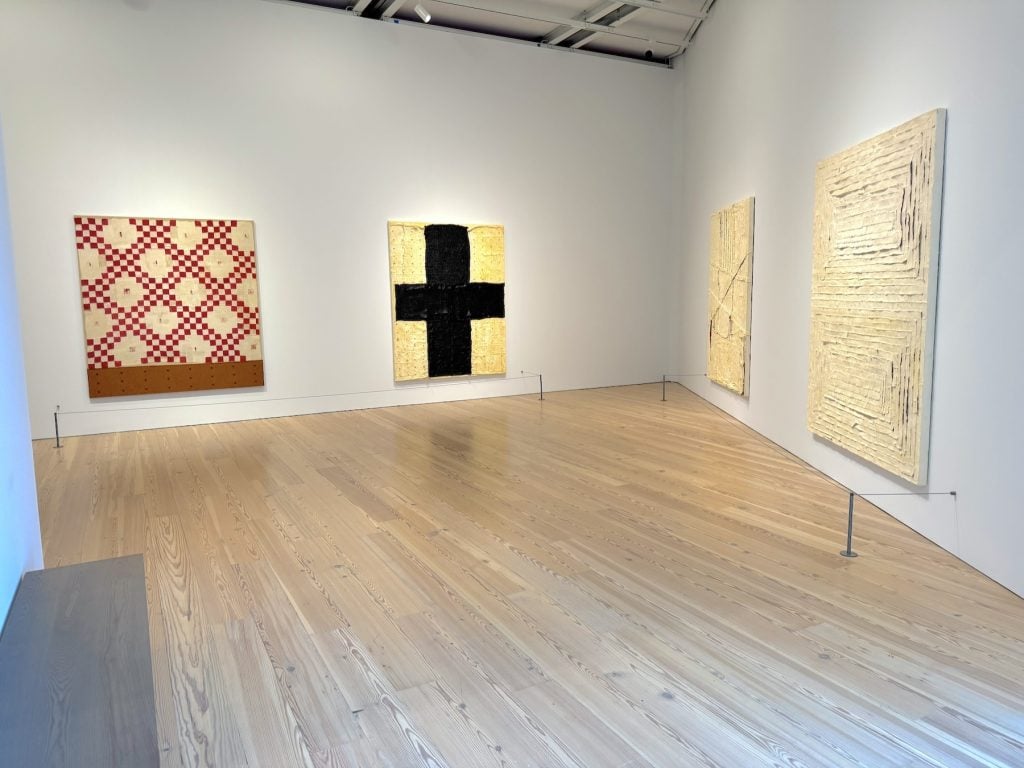
Four works by Harmony Hammond. Photo by Ben Davis.

Julia Phillips, Mediator (2022). Photo by Ben Davis.
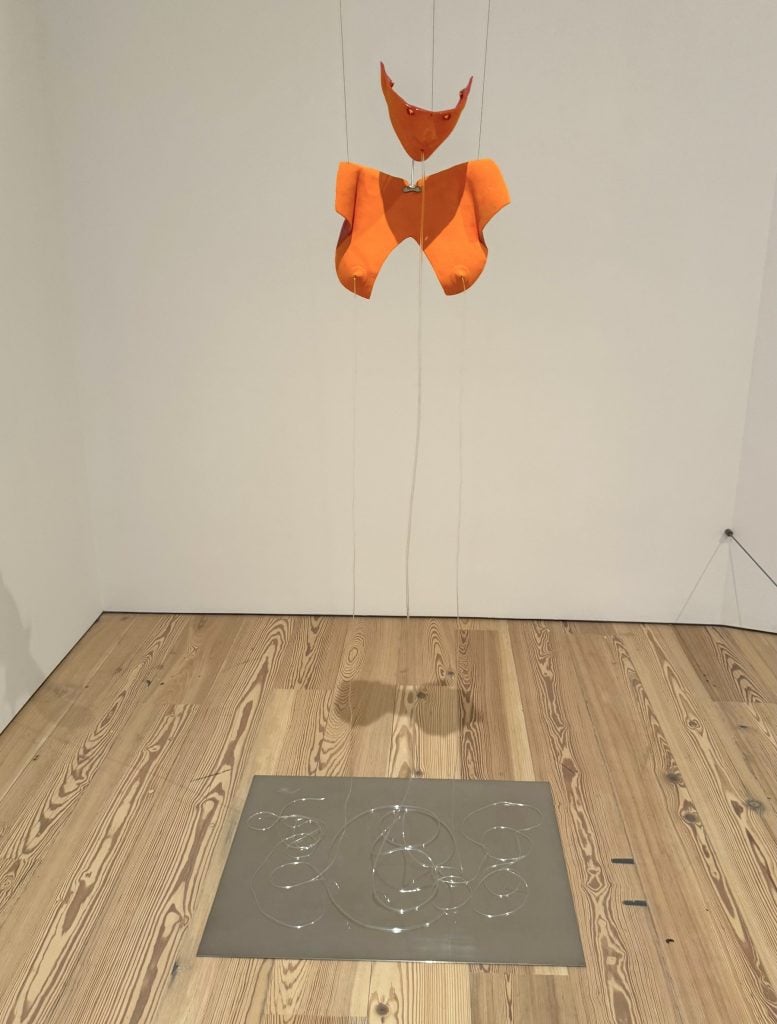
Julia Phillips, Nourisher (2022). Photo by Ben Davis.
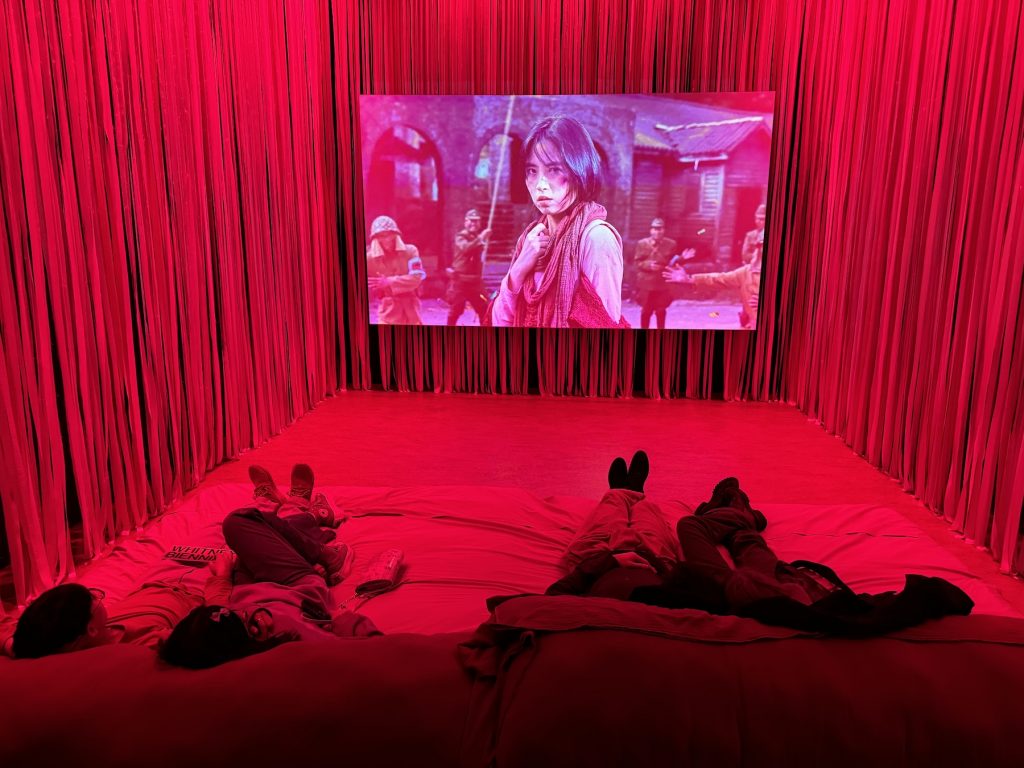
Diane Severin Nguyen, In Her Time (Iris’s Version) (2023-24). Photo by Ben Davis.
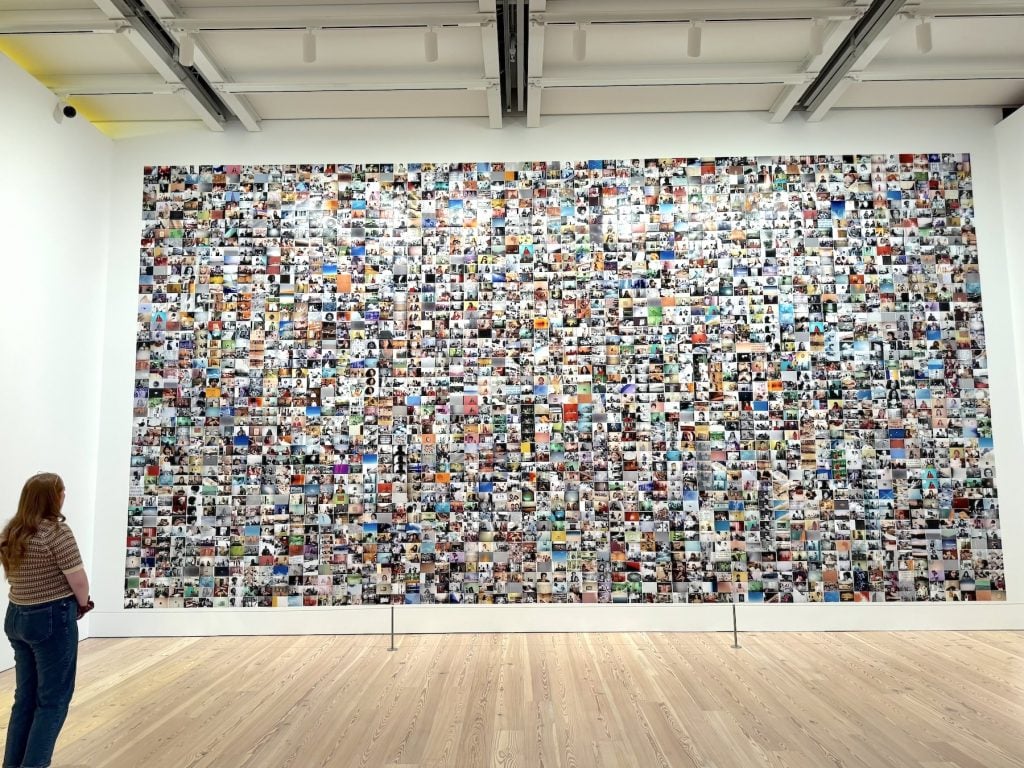
Carmen Winant, The Last Safe Abortion (2023). Photo by Ben Davis.
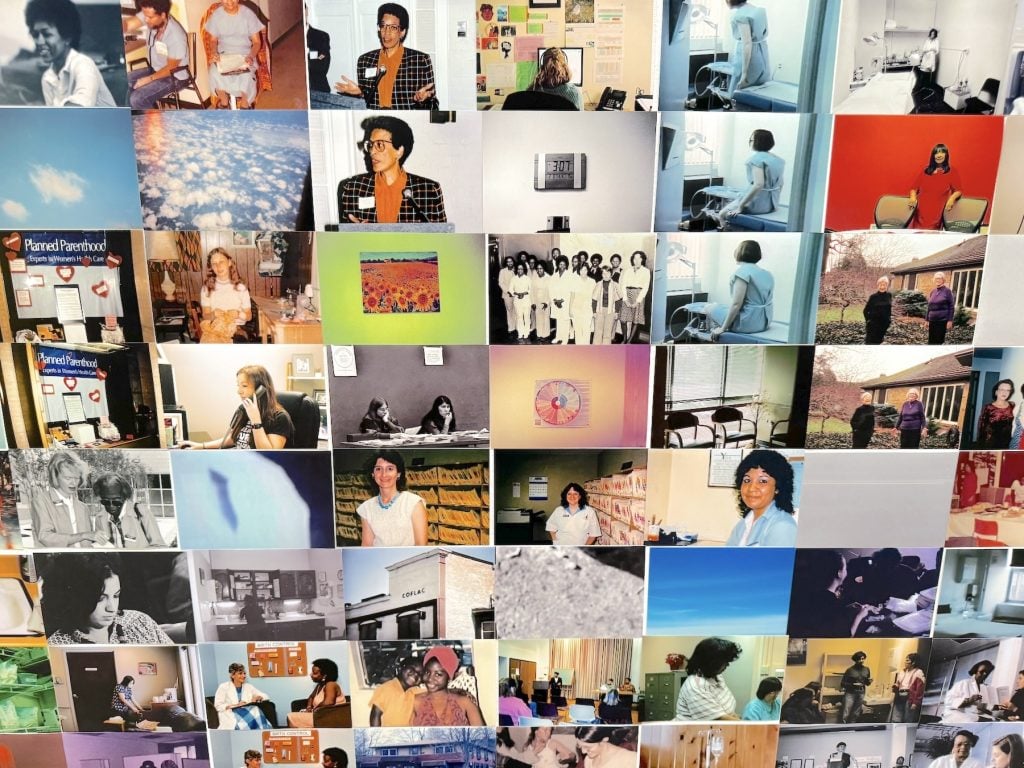
Detail of Carmen Winant, The Last Safe Abortion (2023). Photo by Ben Davis.
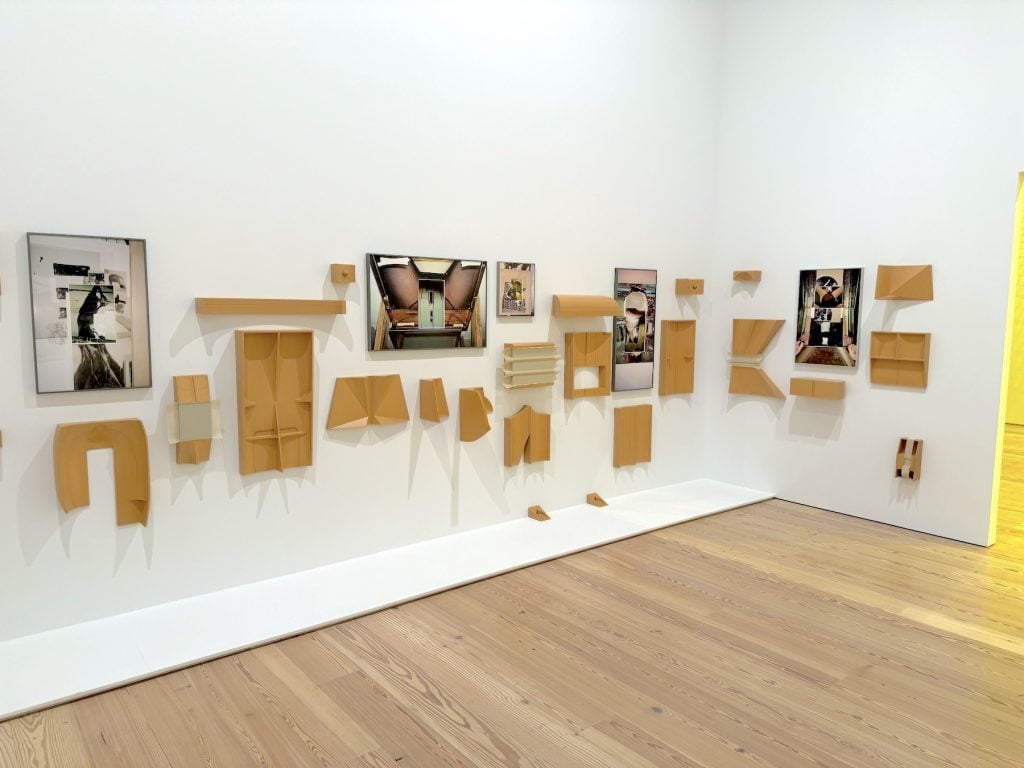
Various works by B. Ingrid Olson. Photo by Ben Davis.
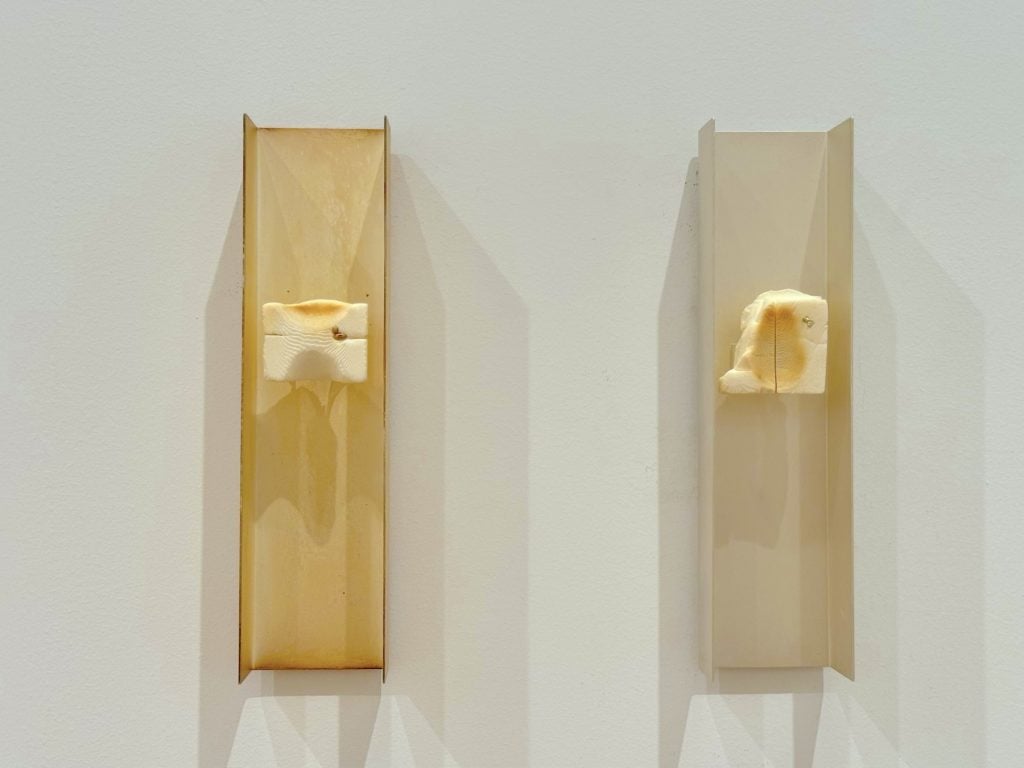
Works by K.R.M. Mooney. Photo by Ben Davis.
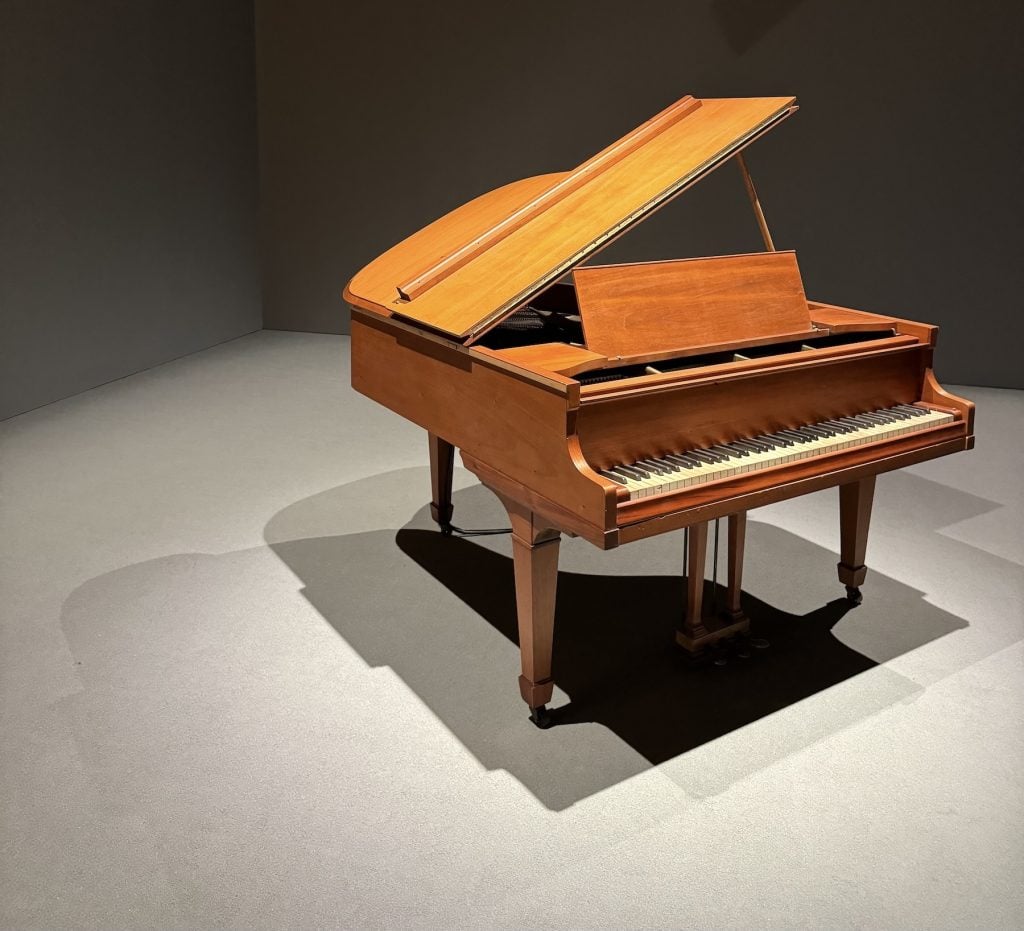
Nikita Gale, TEMPO RUBATO (STOLEN TIME) (2023-24). Photo by Ben Davis.
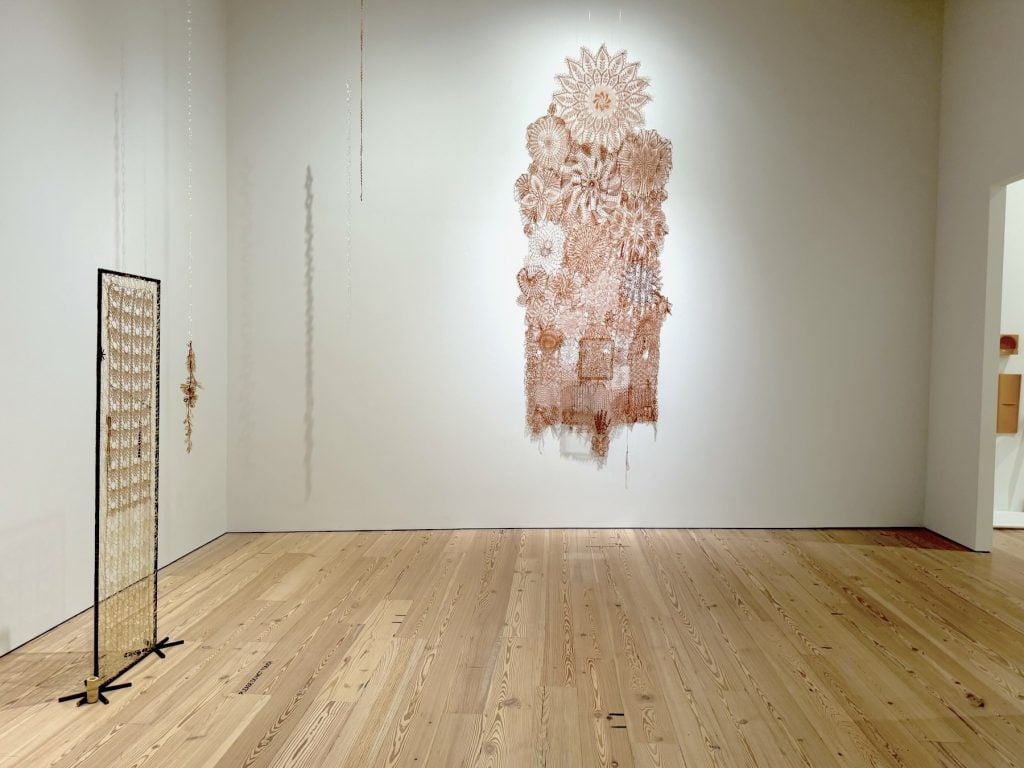
Various works by ektor garcia. Photo by Ben Davis.
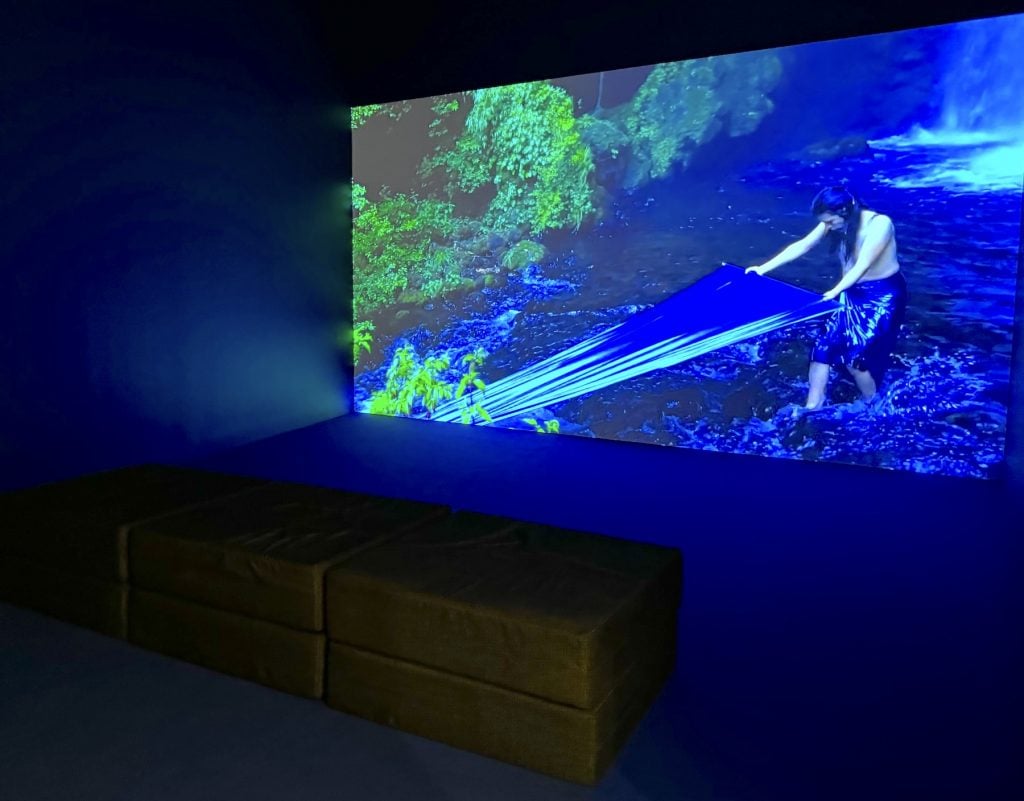
Installation view of Seba Calfuqueo, TRAY TRAY KO (2022). Photo by Ben Davis.
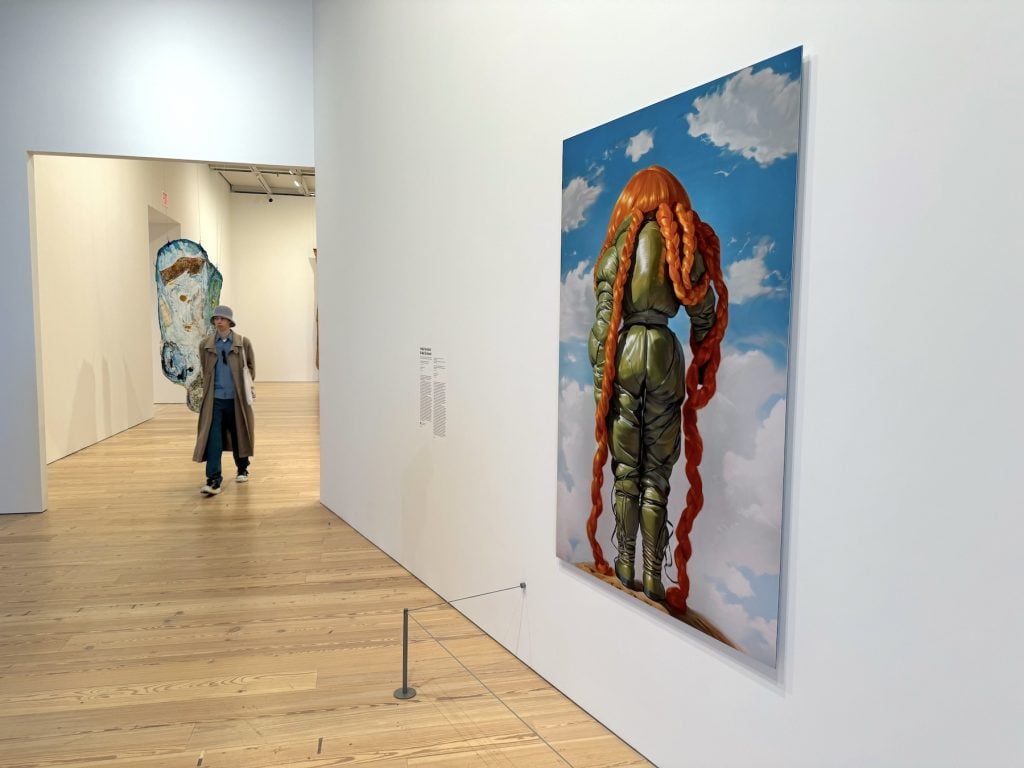
Installation view of work by Holly Herndon and Matt Dryhurst [foreground] and Suzanne Jackson [background]. Photo by Ben Davis.
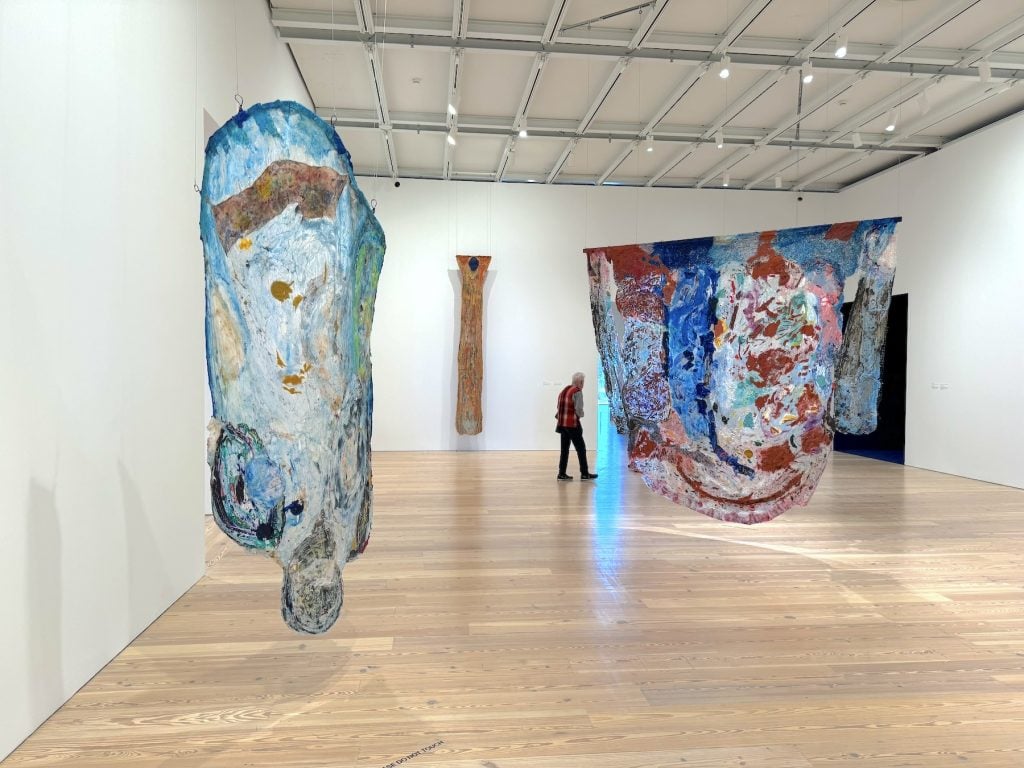
Various works by Suzanne Jackson. Photo by Ben Davis.
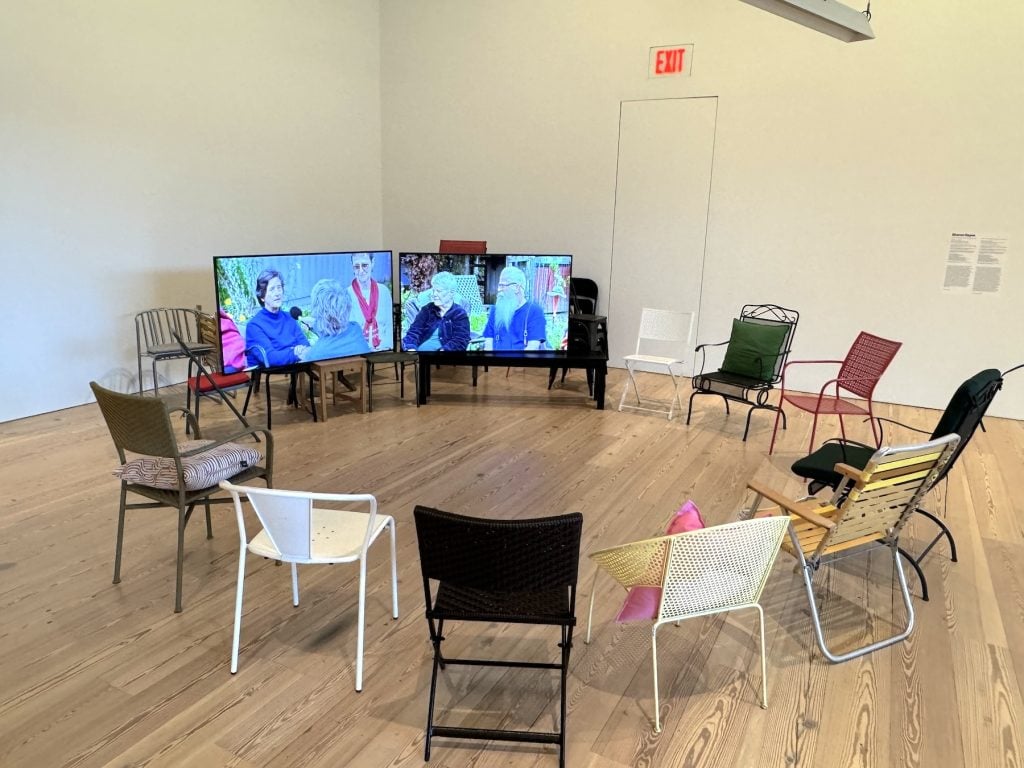
Sharon Hayes, Ricerche: four (2024). Photo by Ben Davis.

Carolyn Lazard, Toilette (2024) [foreground] and Mary Kelly, Lacunae (2023) [background]. Photo by Ben Davis.

Detail of Mary Kelly, Lacunae (2023). Photo by Ben Davis.
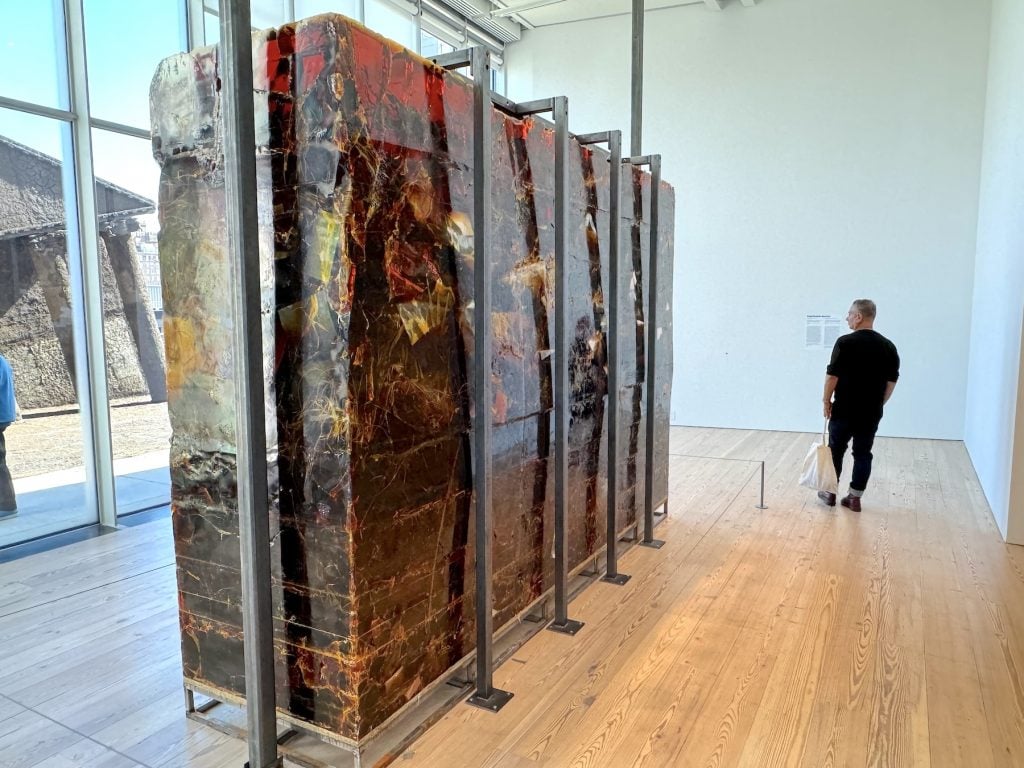
Eddie Ruoolfo Aparicio, Paloma Blanca Deja Volar/White Dove Let Us Fly (2024). Photo by Ben Davis.
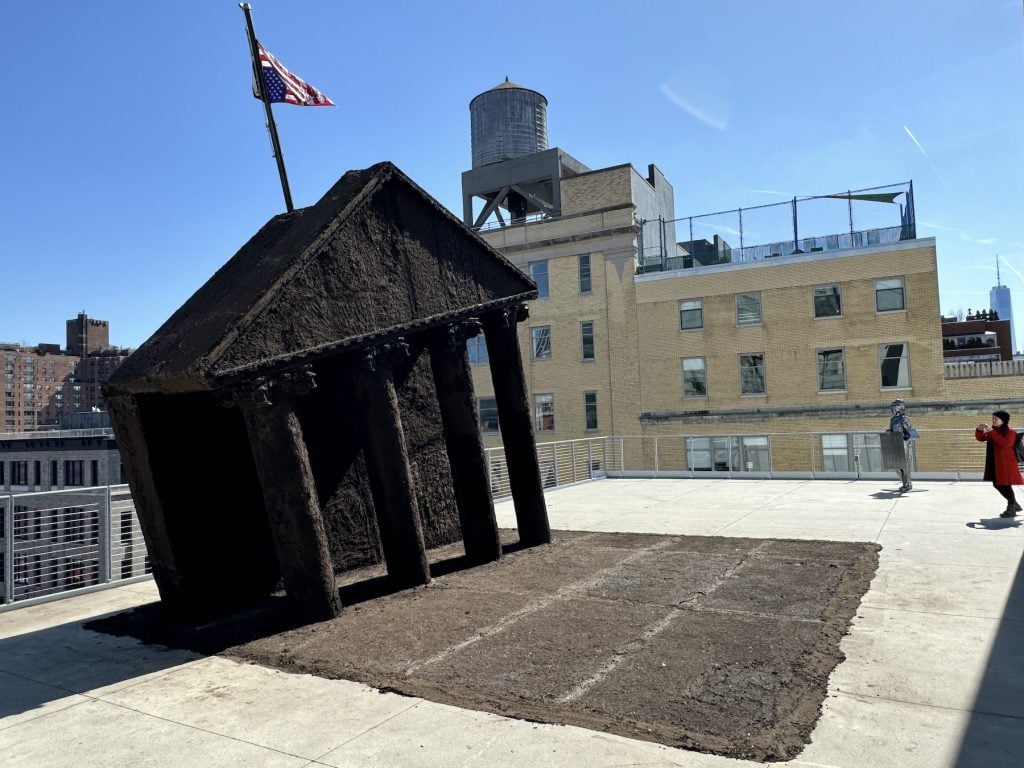
Kiyan Williams, Ruins of Empire II or The Earth Swallows the Master’s House (2024) and Statue of Freedom (Marsha P. Williams) (2023) on the deck at the Whitney. Photo by Ben Davis.
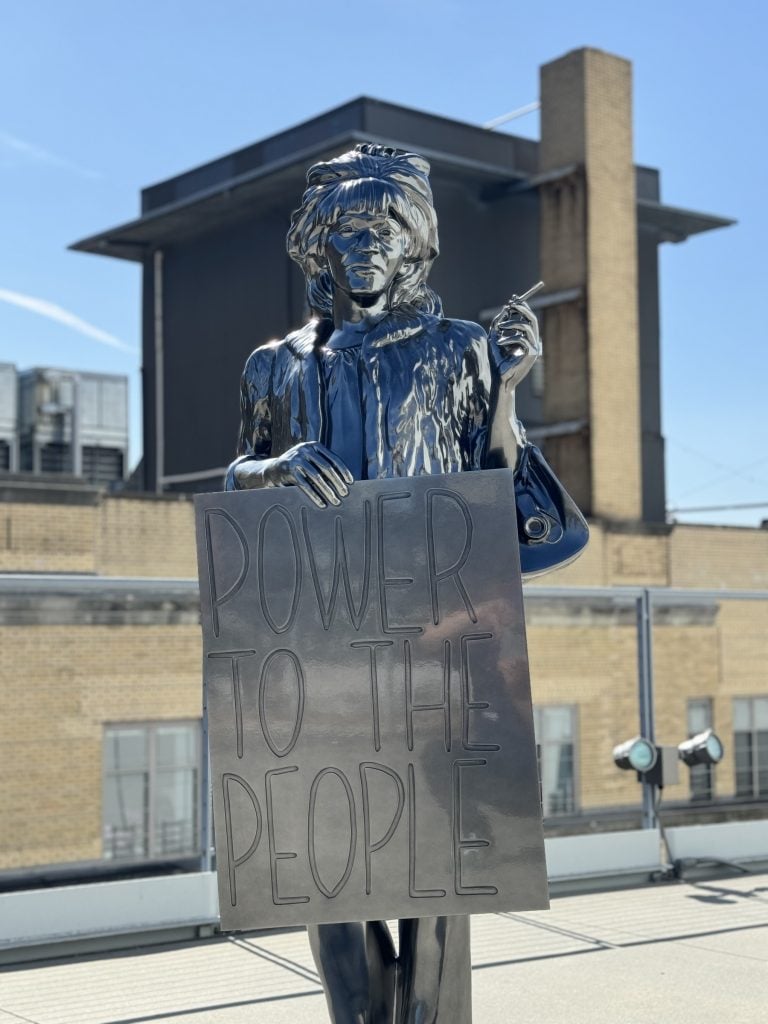
Kiyan Williams, Statue of Freedom (Marsha P. Williams) (2023). Photo by Ben Davis.
The second association the museum proposes for “Even Better Than the Real Thing” is more clearly where this show’s heart is. The defiant tone is meant to suggest a questioning who is considered the “real thing” and who has been considered marginal, fake, or derivative.
The show is full of statements about disability (Carolyn Lazard, Constantina Zavitsanos, and the collective People Who Stutter Create); statements about contemporary discrimination (Carmen Winant’s The Last Safe Abortion, Sharon Hayes’s piece interviewing queer elders); and works celebrating Indigenous resilience (Cannupa Hanska Luger, Rose B. Simpson, Demian DinéYazhi).
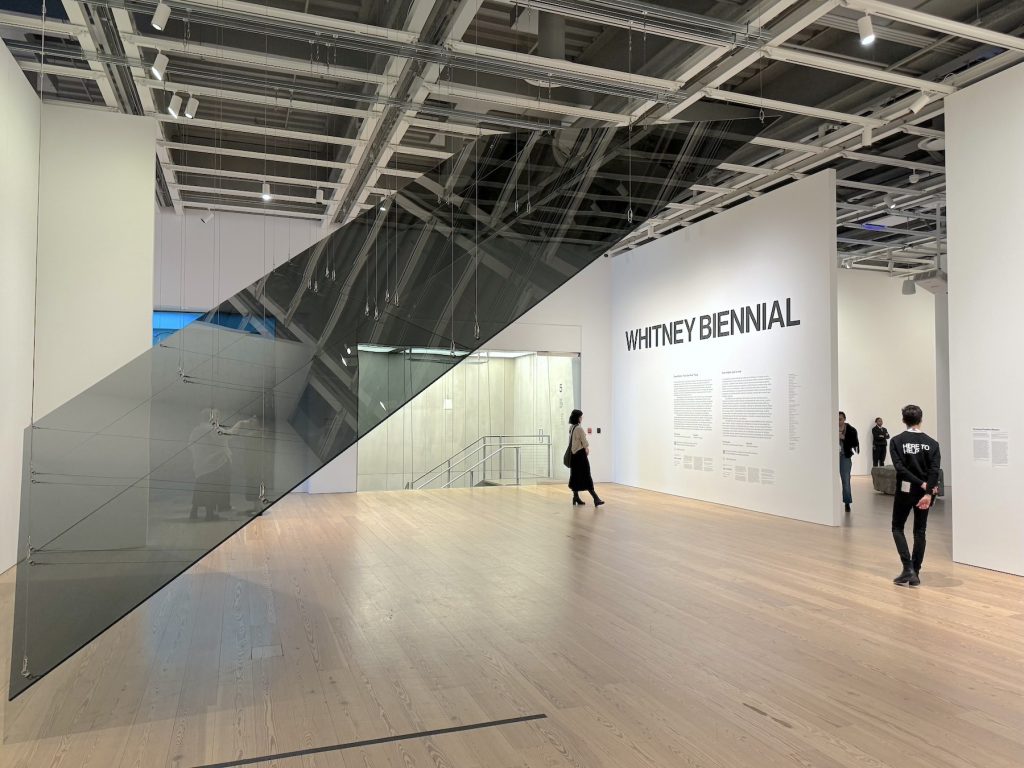
Charisse Pearlina Weston, un- (anterior ellipse[s] as mangled container; or where edges meet to wedge and [un]moor (2024). Photo by Ben Davis.
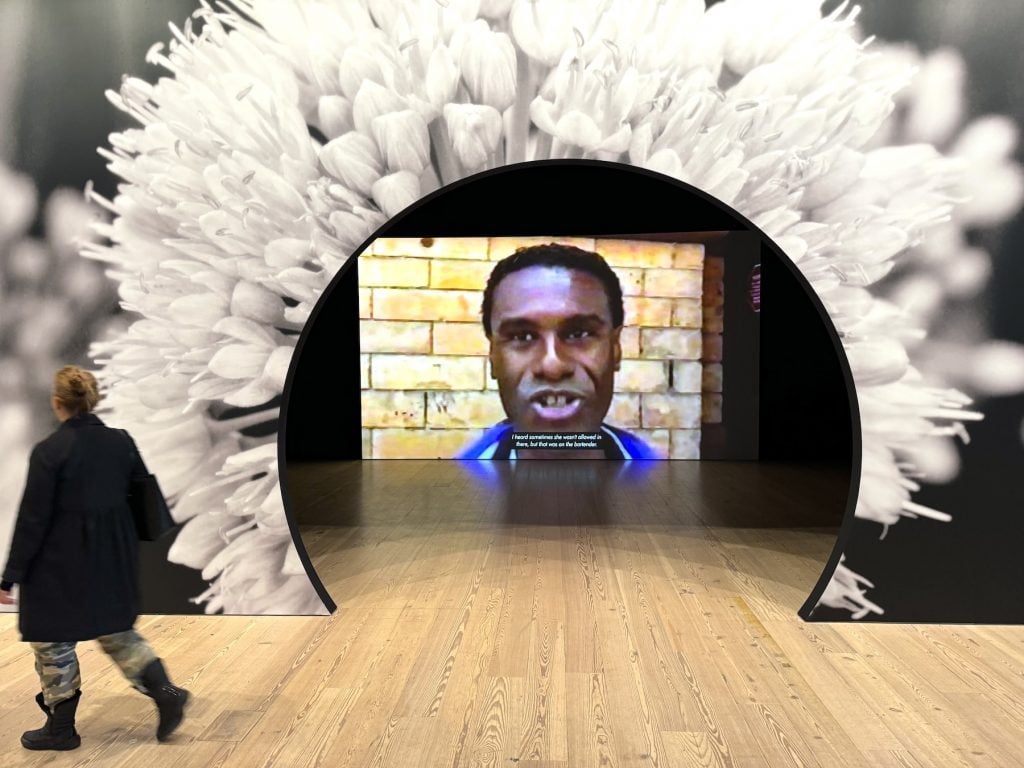
Installation view of Tourmaline, Pollinator (2022). Photo by Ben Davis.
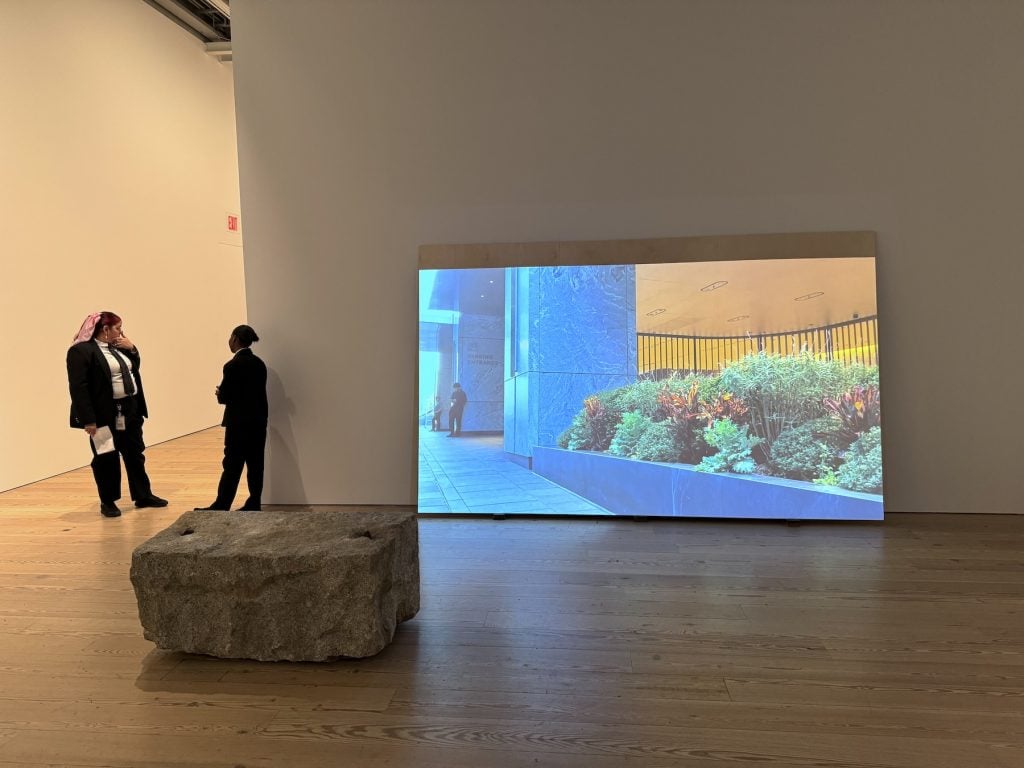
Installation view of Dora Budor, Lifelike (2024). Photo by Ben Davis.
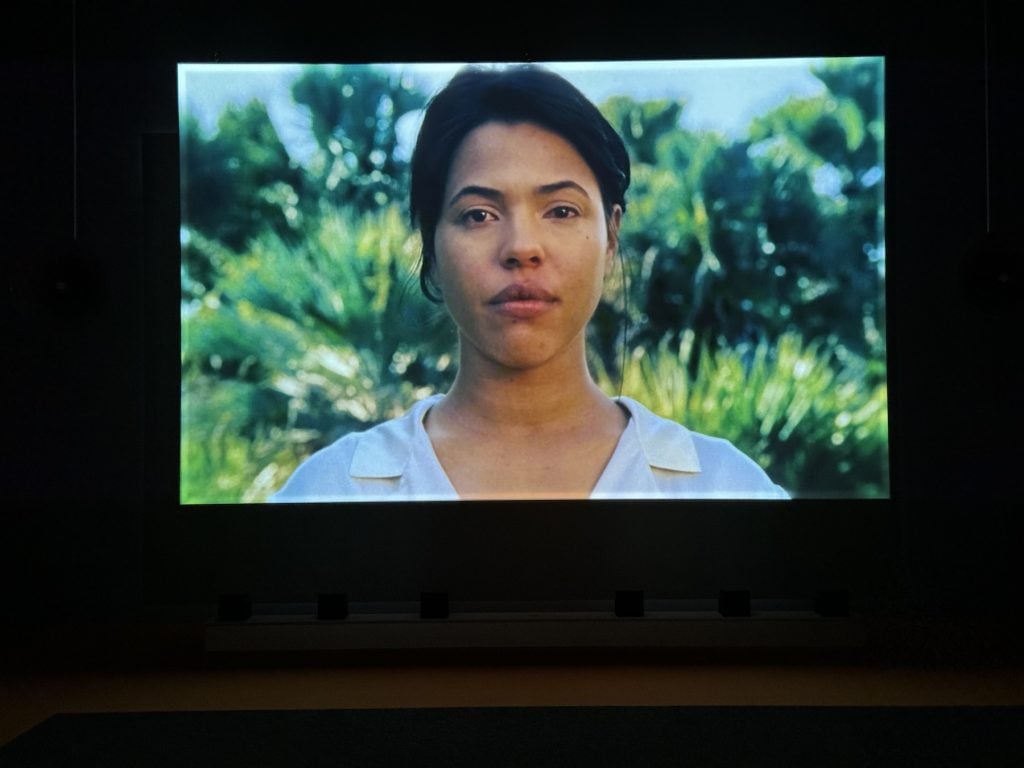
Installation view of Madeleine Hunt-Ehrlich, Too Bright to See (2023-24). Photo by Ben Davis.
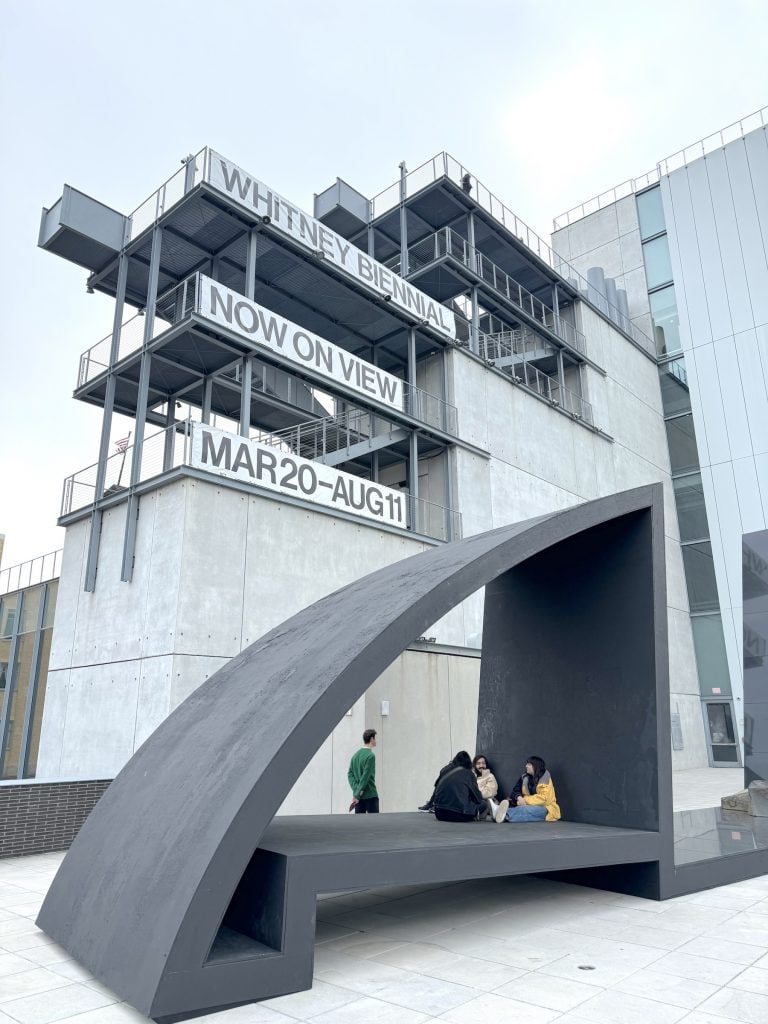
An element of Torkwase Dyson, Liquid Shadows, Solid Dreams (A Monastic Playground) (2024). Photo by Ben Davis.
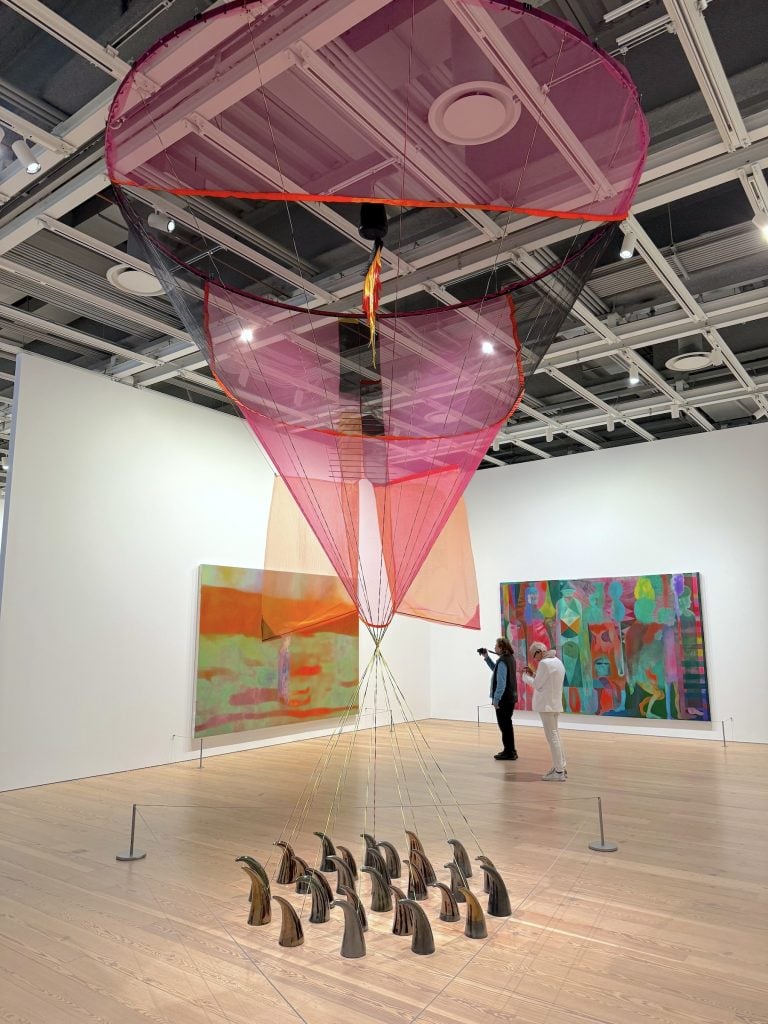
Canupa Hanska Luger, Unziwoslal Wašičuta (from the series “Future Ancestral Technologies”) (2021-)

Maja Ruznic, Deep Calls to Deep (2023). Photo by Ben Davis.
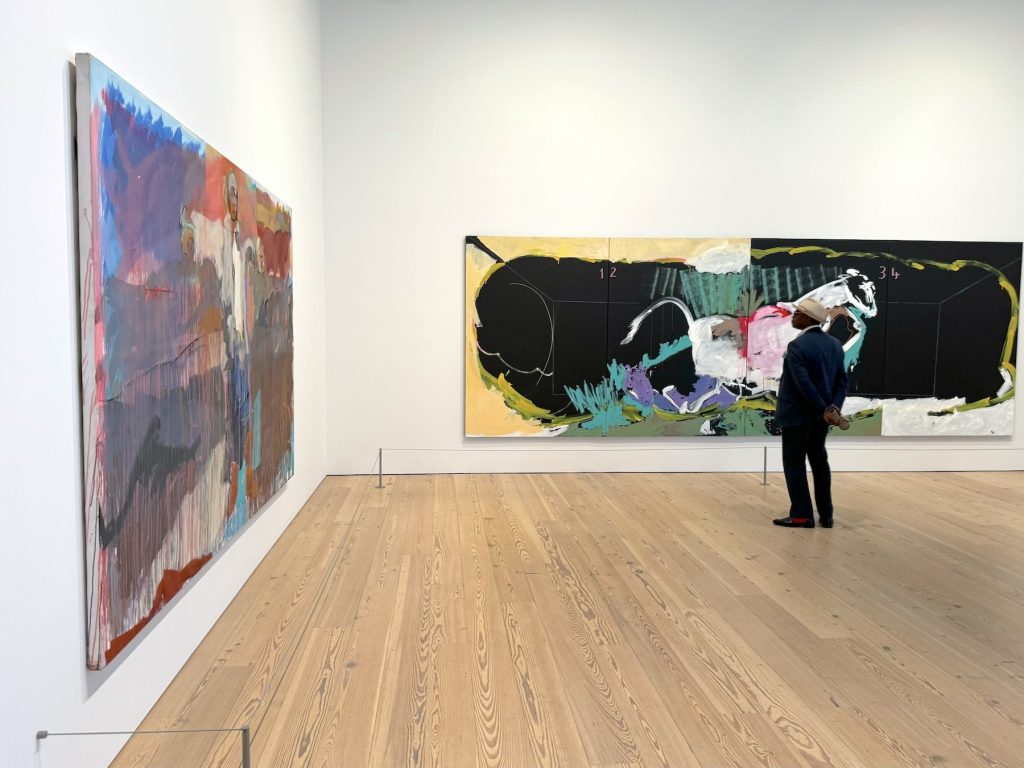
Two paintings by Mary Lovelace O’Neal. Photo by Ben Davis.
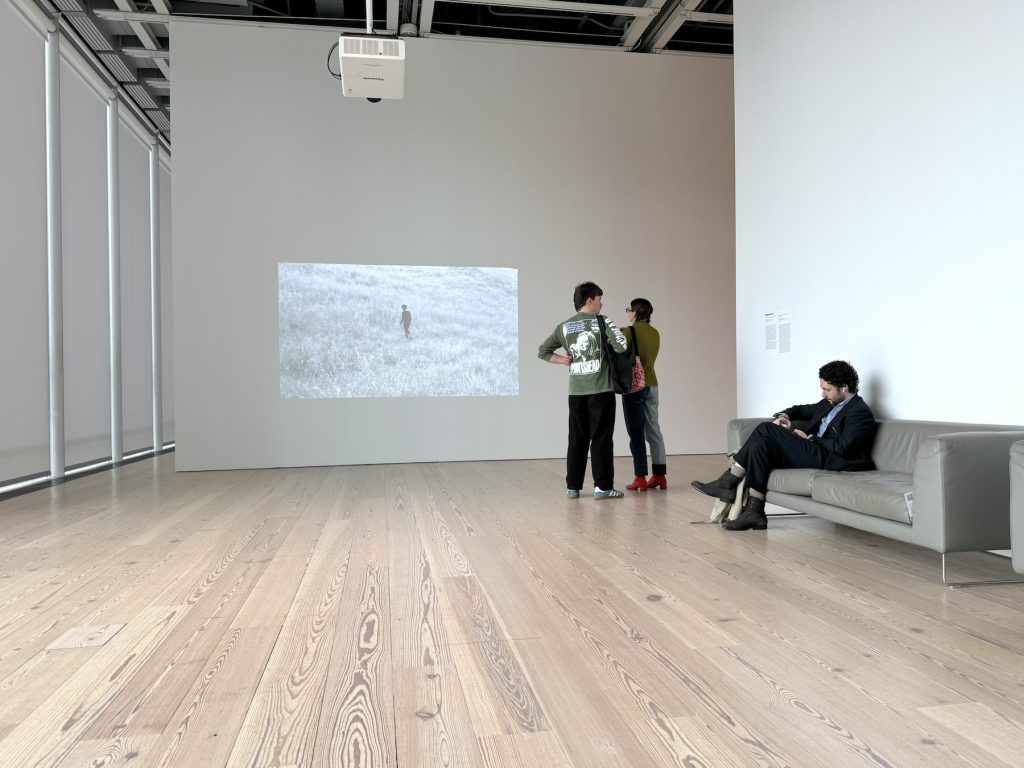
Installation view of Dionne Lee, Challenger Deep (2019). Photo by Ben Davis.
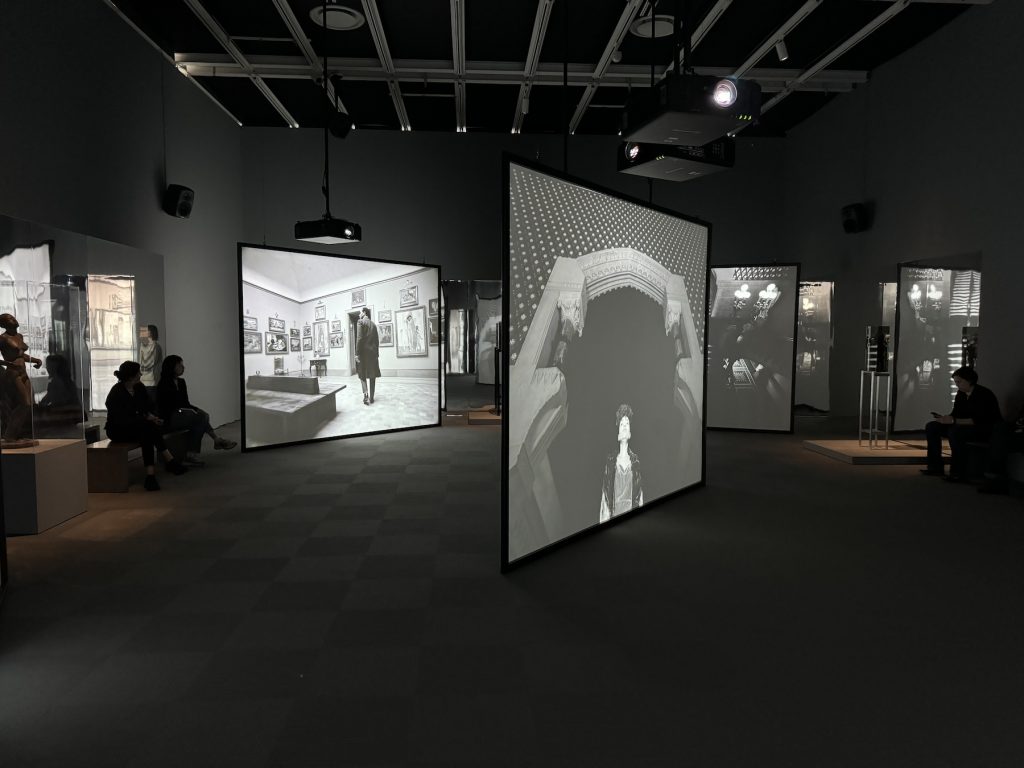
Installation view of Isaac Julien, Once Again… (Statues Never Die) (2022). Photo by Ben Davis.

installation view of Karyn Olivier, How Many Ways Can You Disappear (2021) and Stop Gap (2020). Photo by Ben Davis.
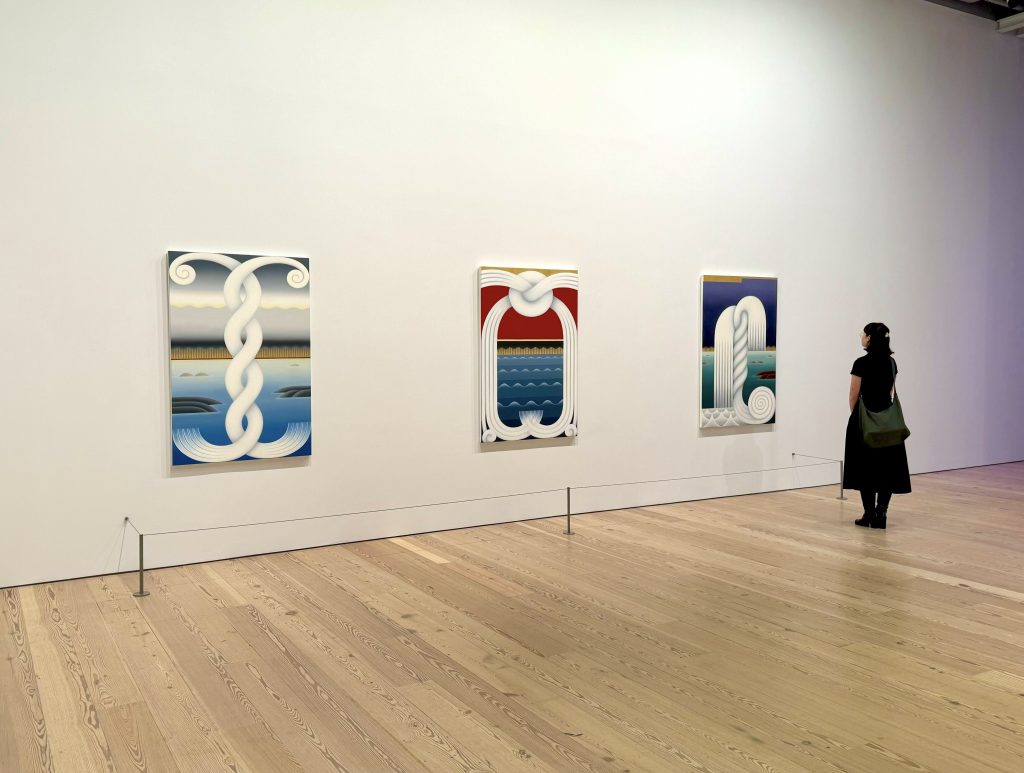
Various paintings by Takako Yamaguchi. Photo by Ben Davis.
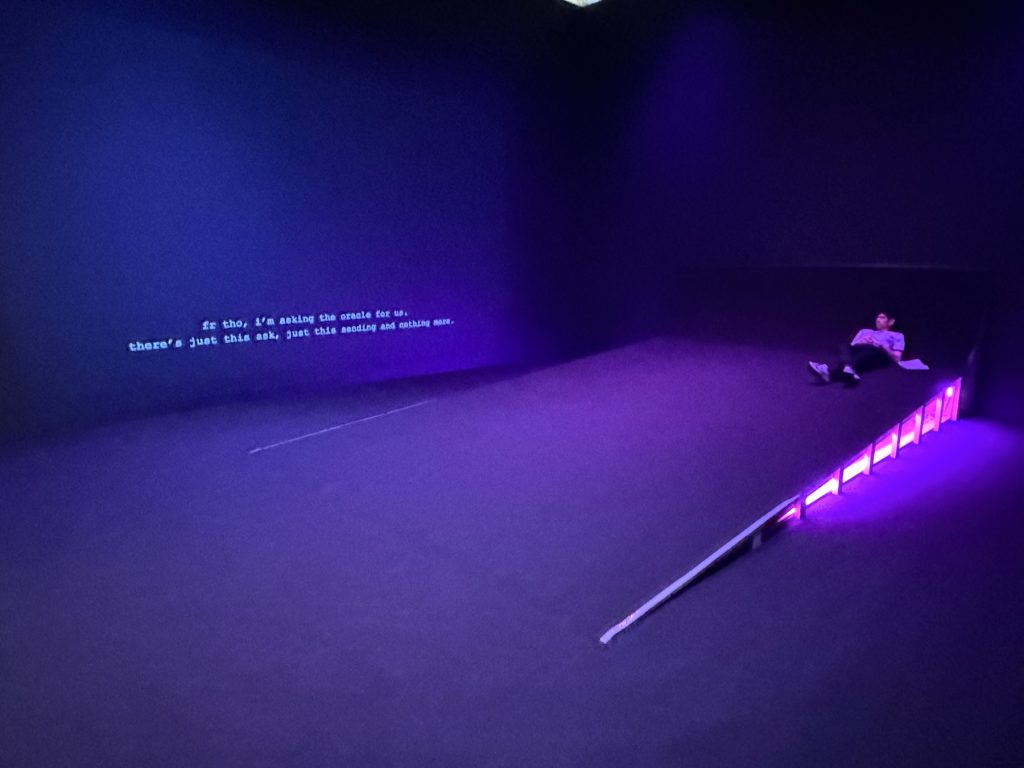
Installation view of Constantina Zavitsanos, All the time (2019) and Call to Post (Violet) (2019/24). Photo by Ben Davis.
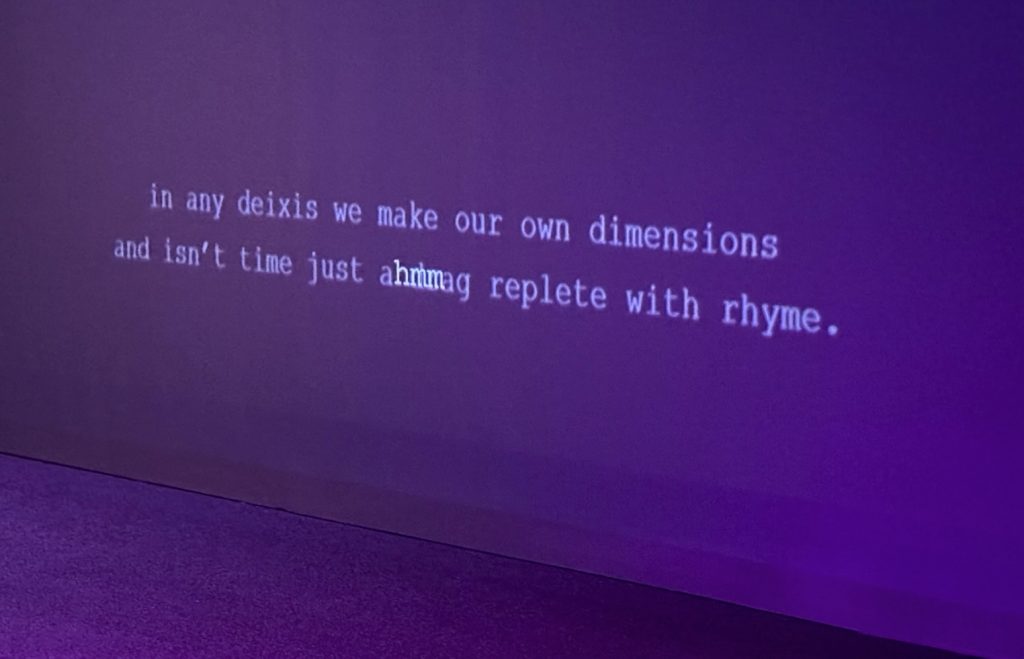
Detail of Constantina Zavitsanos, Call to Post (Violet) (2019/24). Photo by Ben Davis.
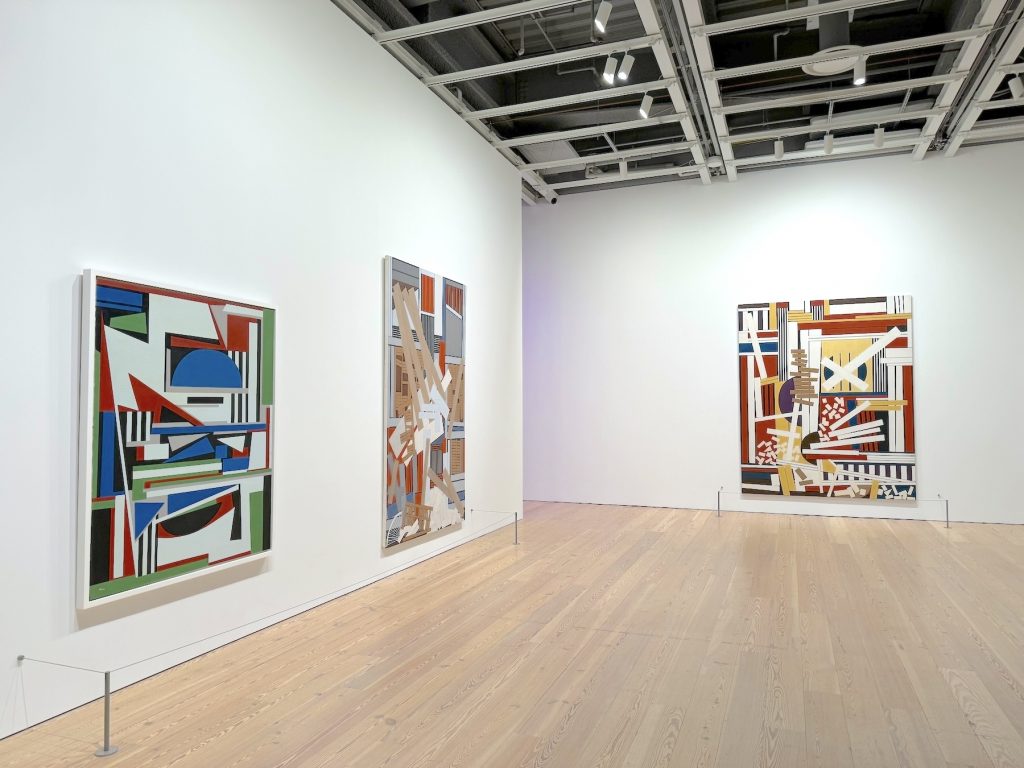
Various paintings by Mavis Pusey. Photo by Ben Davis.
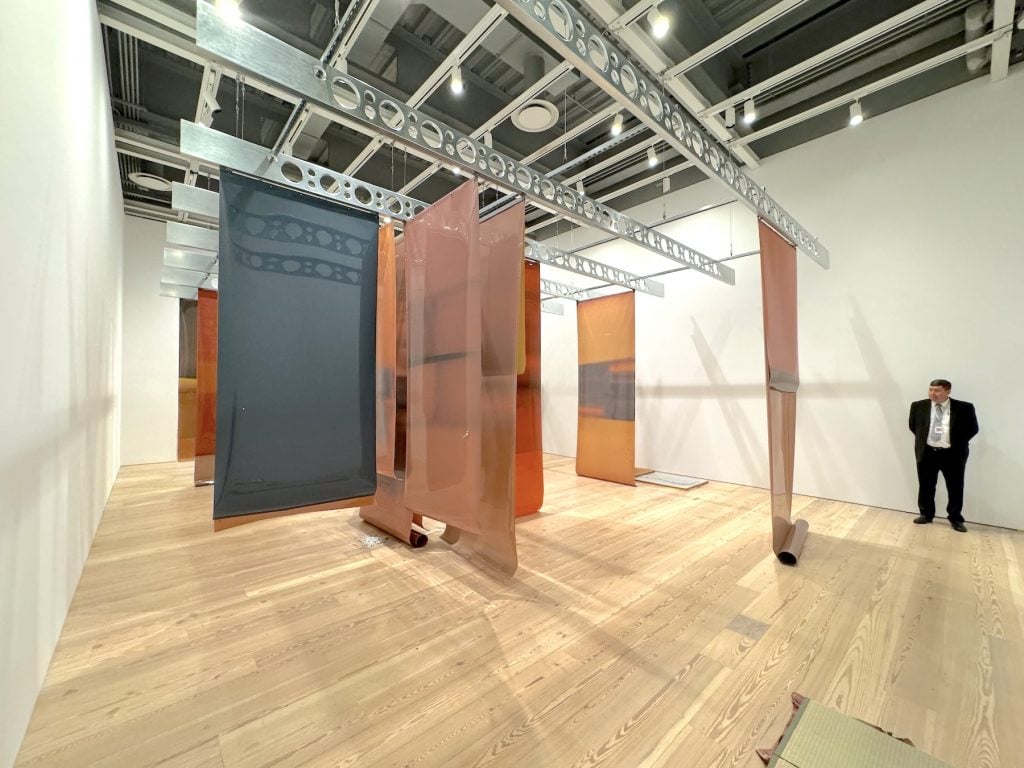
Installation view of Lotus L. Kang, In Cascades (2023-24). Photo by Ben Davis.
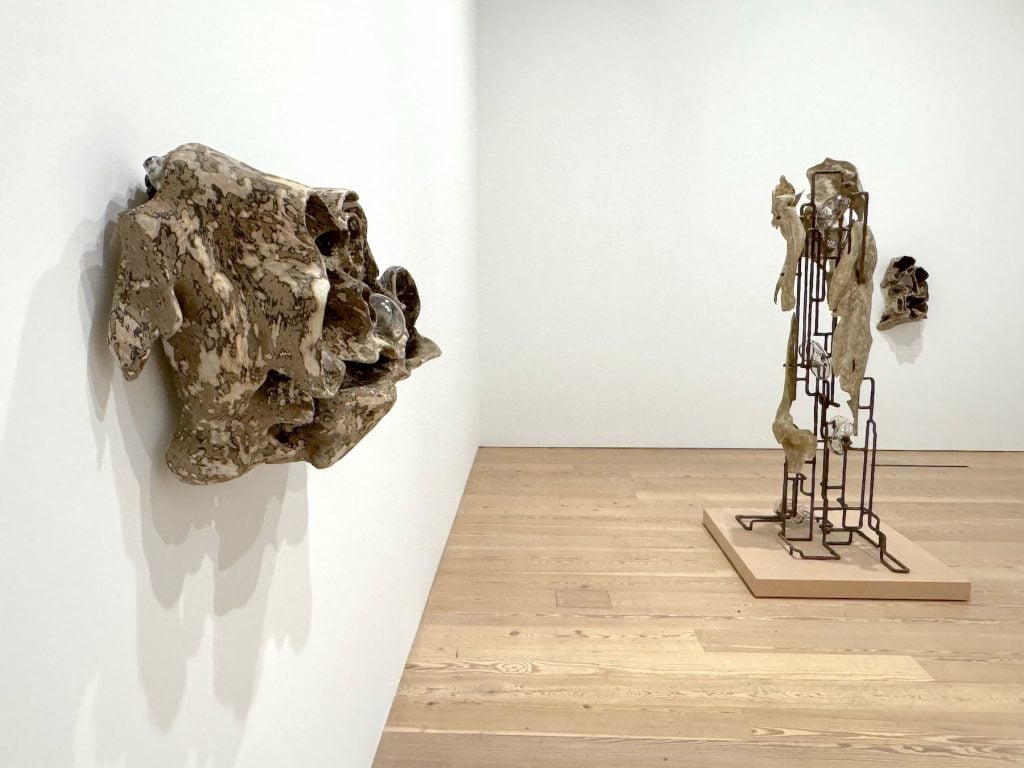
Installation view of works by Jes Fan. Photo by Ben Davis.
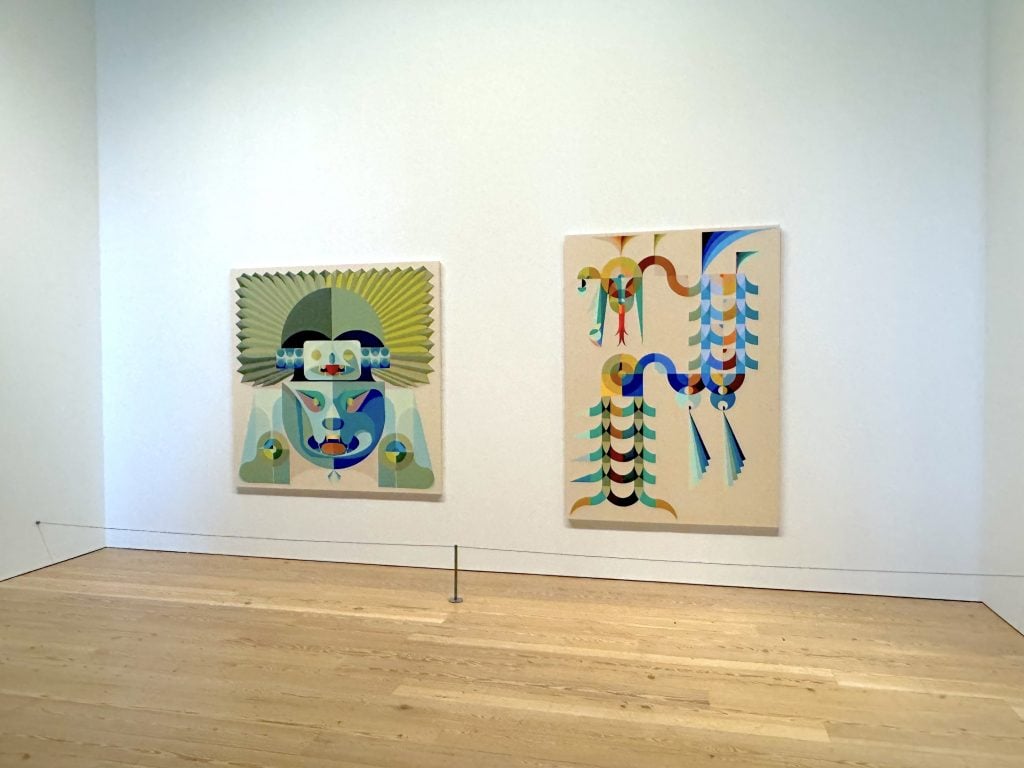
Installation view of Eamon Ore-Giron, Talking Shit With my Jaguar Face (2024) and Talking Shit With Amaru (Wari) (2023). Photo by Ben Davis.
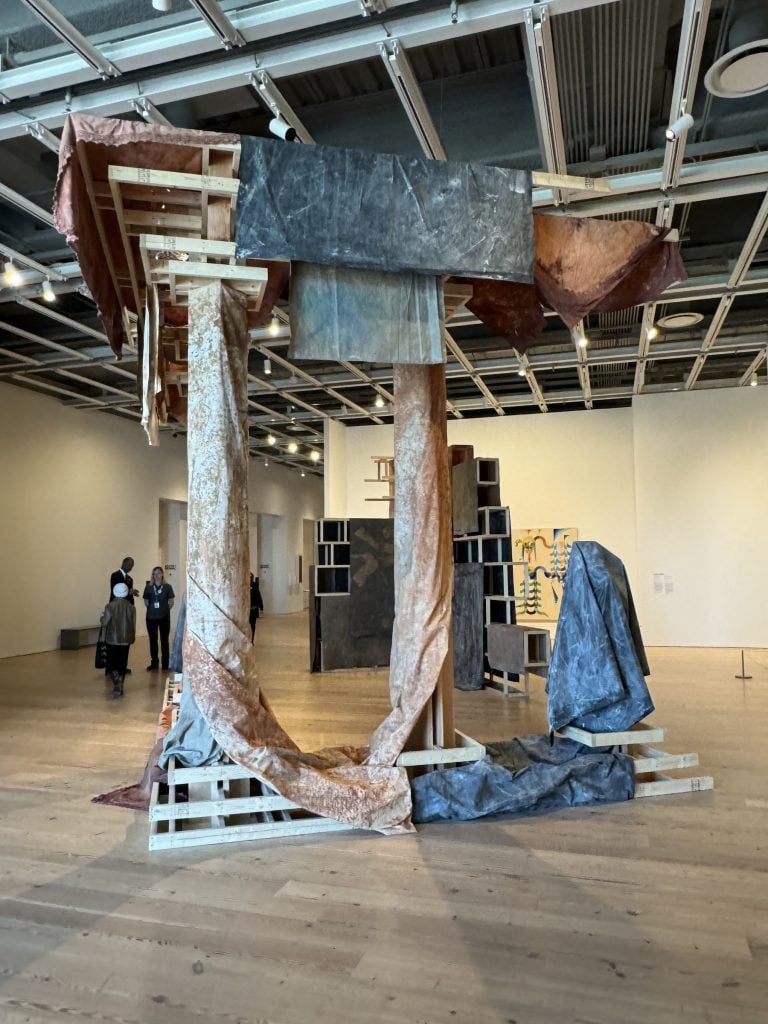
Installation view of Dala Nasser, Adonis River (2023). Photo by Ben Davis.
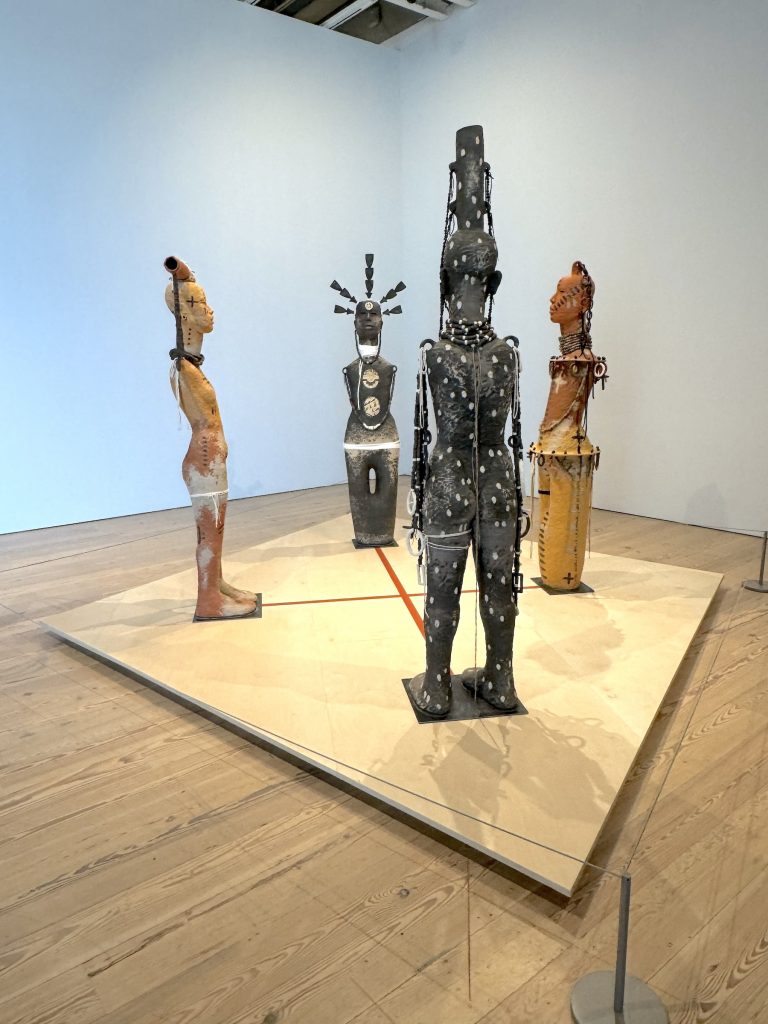
Installation view of Rose B. Simpson, Daughters: Reverence (2024). Photo by Ben Davis.
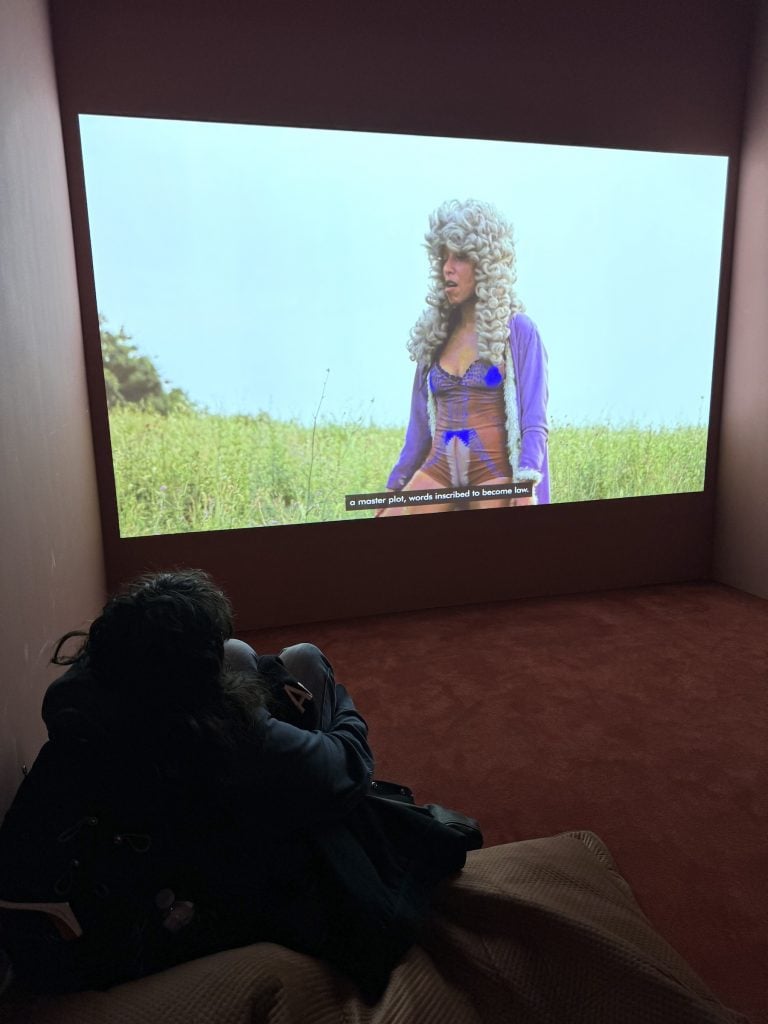
Installation view of Ligia Lewis, A Plot, A Scandal (2023). Photo by Ben Davis.
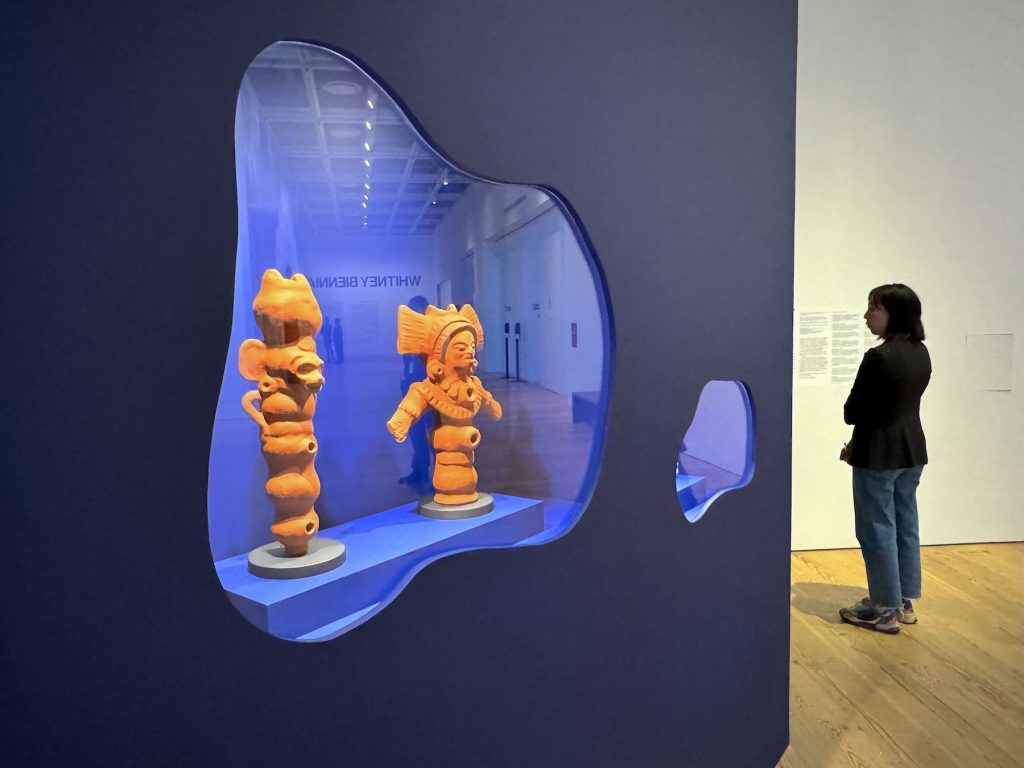
Installation view of Clarissa Tossin music instruments at the Whitney Biennial. Photo by Ben Davis.
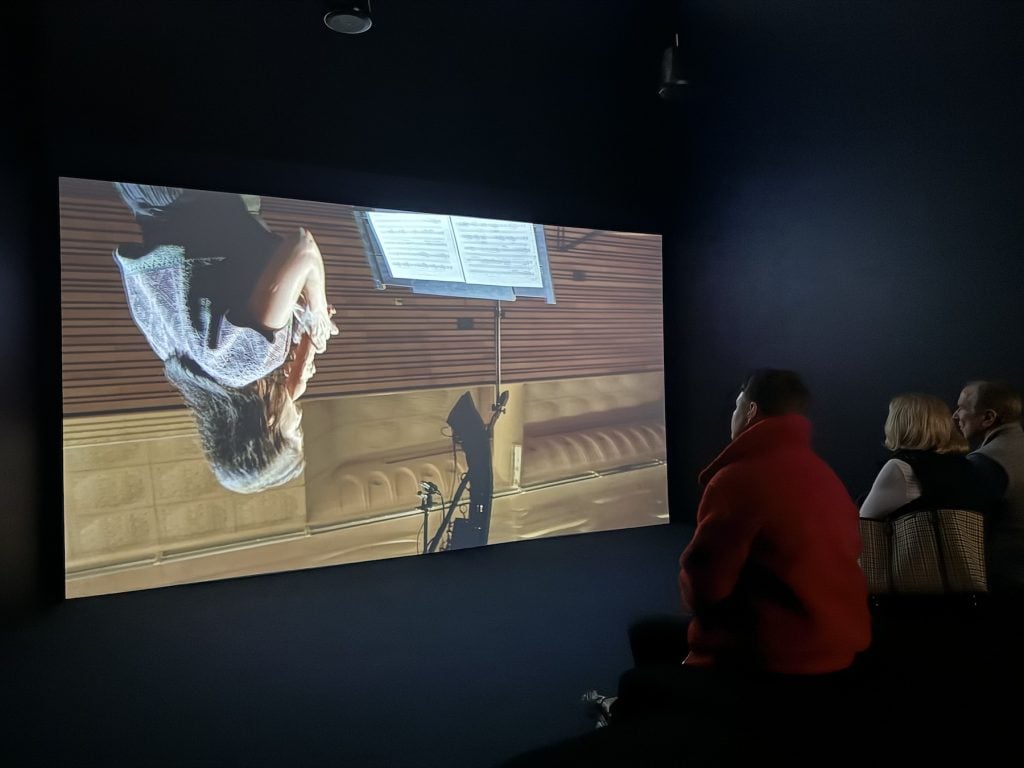
Installation view of Clarissa Tossin, Mojo’q che b’ixan ri ixkanulab’ / Antes de que los Volcanes Canten / Before the Volcanos Sing (2022). Photo by Ben Davis.

Installation view of one part of Demian DinéYazhi, we must stop imagining apocalypse/genocide + we must imagine liberation (2024). Photo by Ben Davis.
There’s also a notable theme of celebrating heroic figures from Black history, in works by Madeleine Hunt-Ehrlich (a tribute to Suzanne Césaire), Isaac Julien (an installation that examines the story of Alain Locke), and Kiyan Williams (a deck sculpture of Marsha P. Johnson).
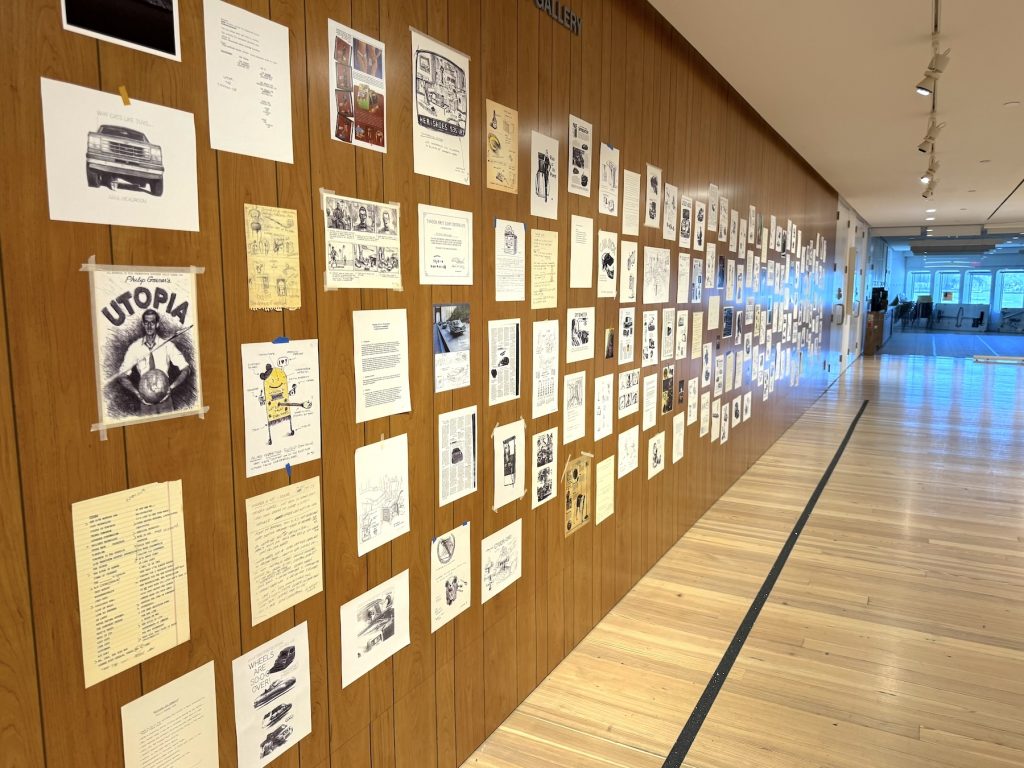
Pippa Garner, Inventor’s Office (2021). Photo by Ben Davis.
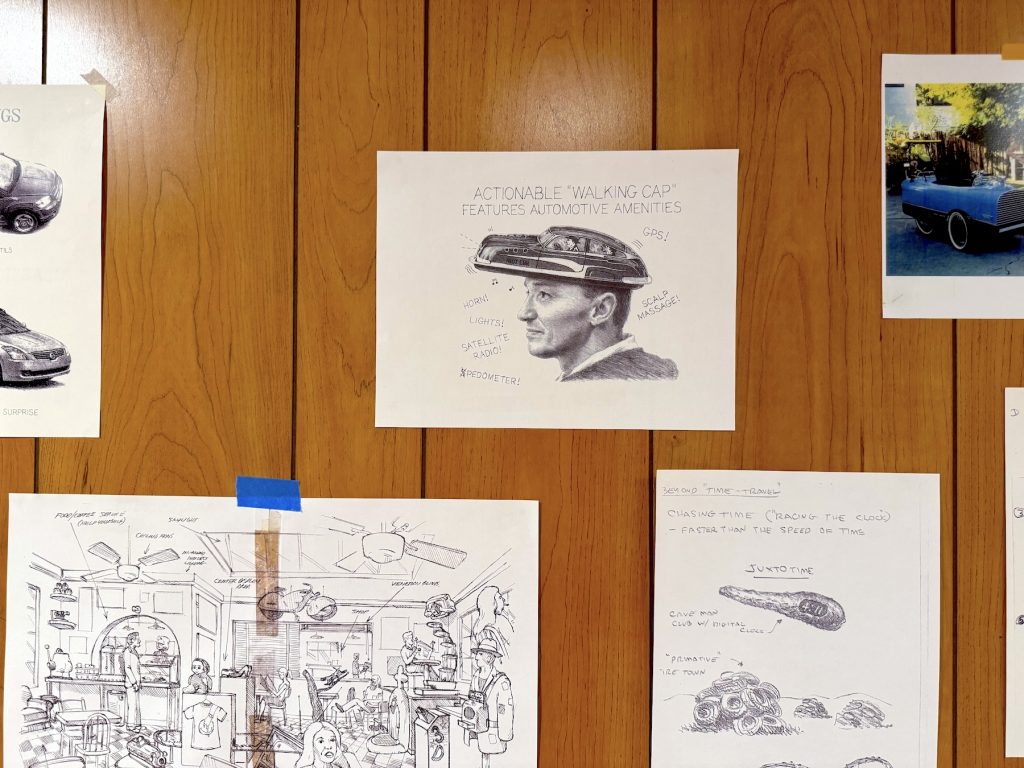
Detail of Pippa Garner, Inventor’s Office (2021). Photo by Ben Davis.
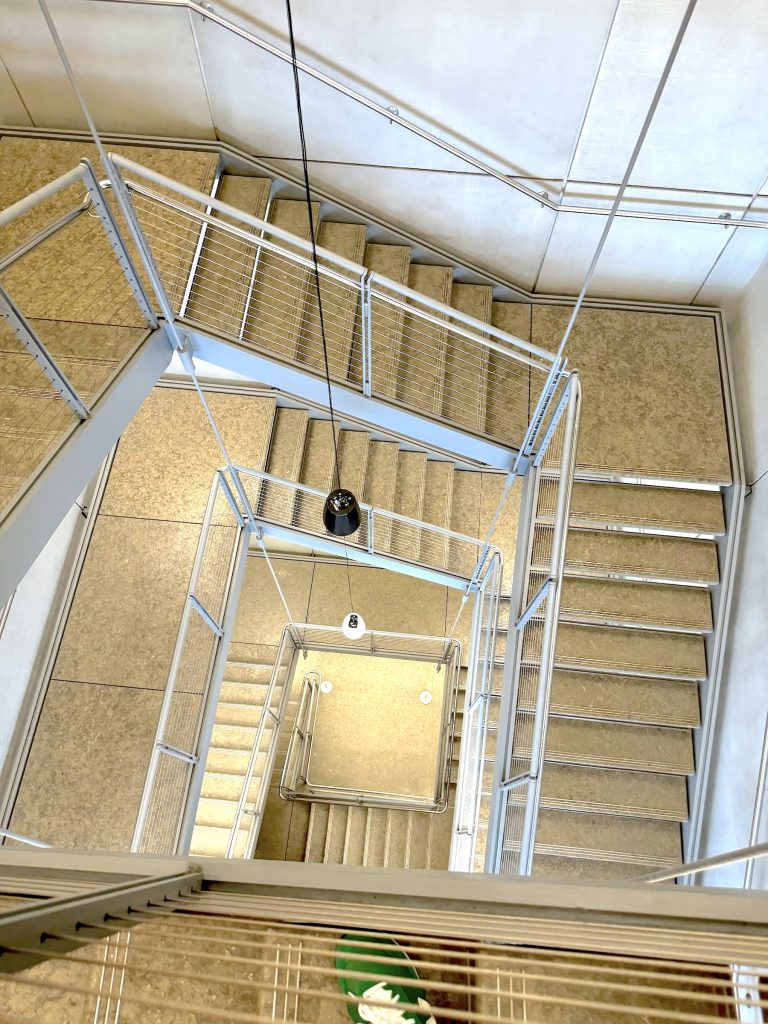
Speakers playing Holland Andrews, Air I Breathe: Radio (2024). Photo by Ben Davis.

Installation view of work by Ser Serpas. Photo by Ben Davis.
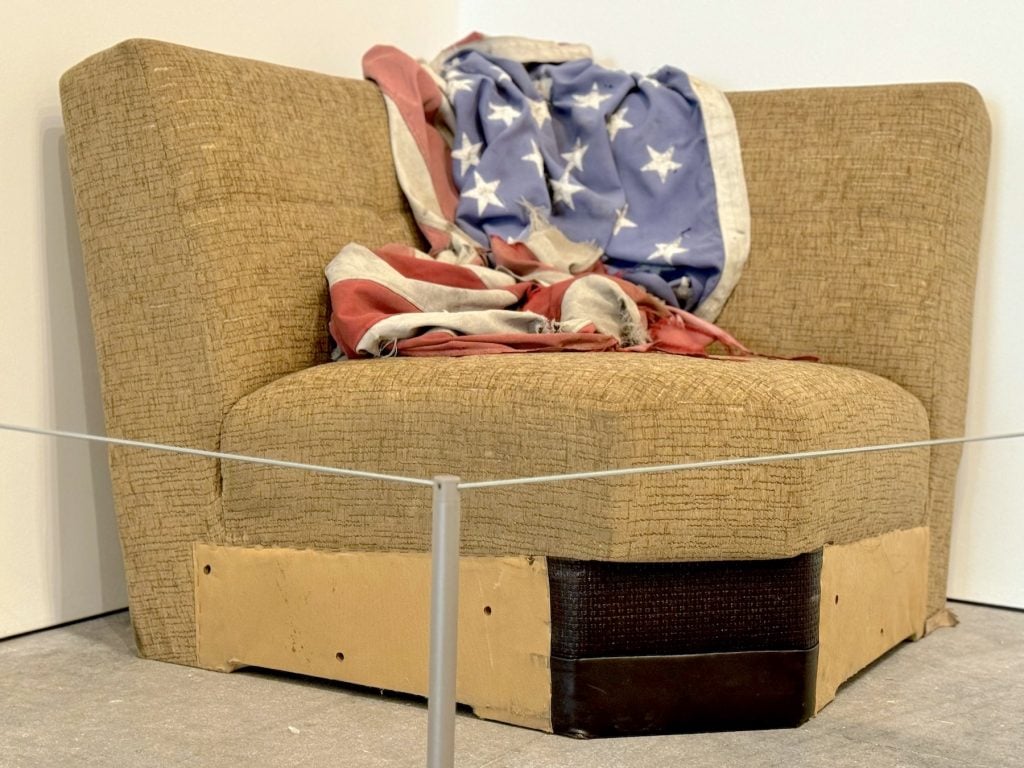
Detail of Installation by Ser Serpas. Photo by Ben Davis.
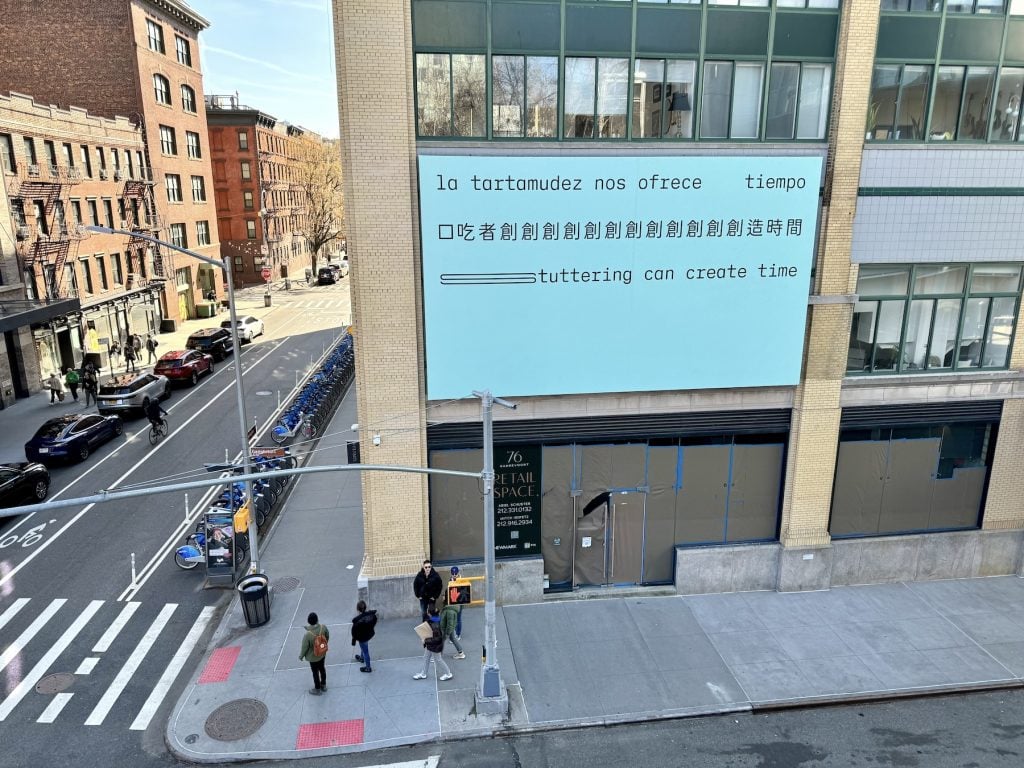
Billboard of by People Who Stutter Create, Stuttering Can Create Time.
On the whole, the show is anti-spectacular, with a focus on abstraction, assemblage, and fragments of things that suggest instead of speaking.